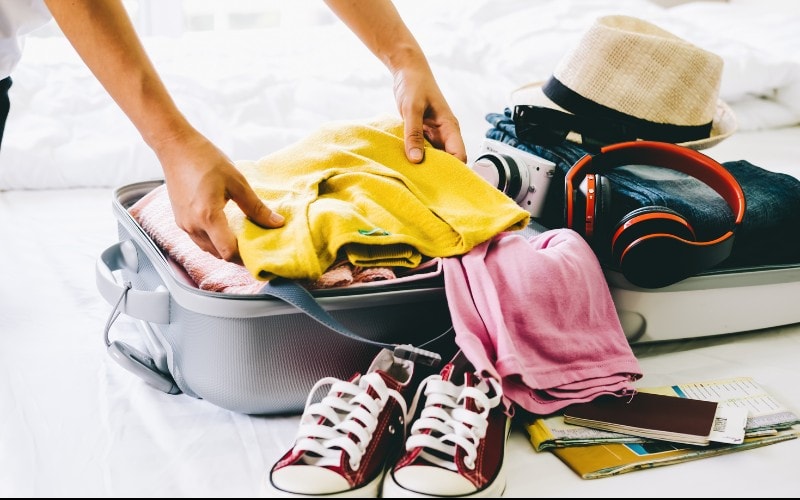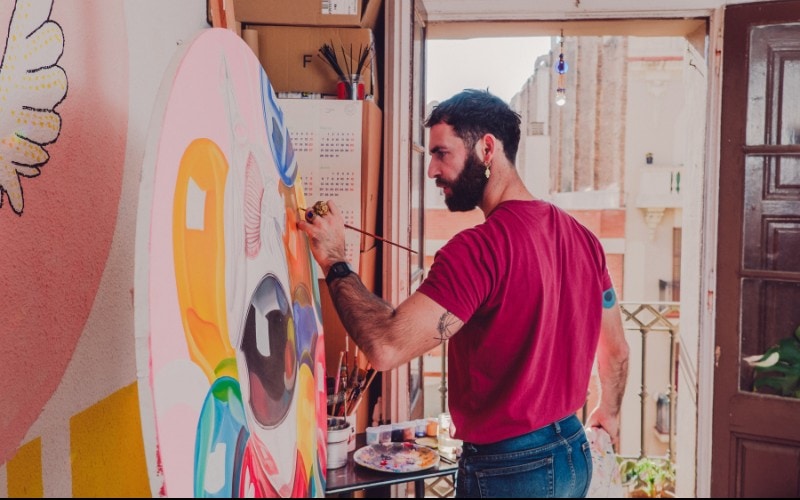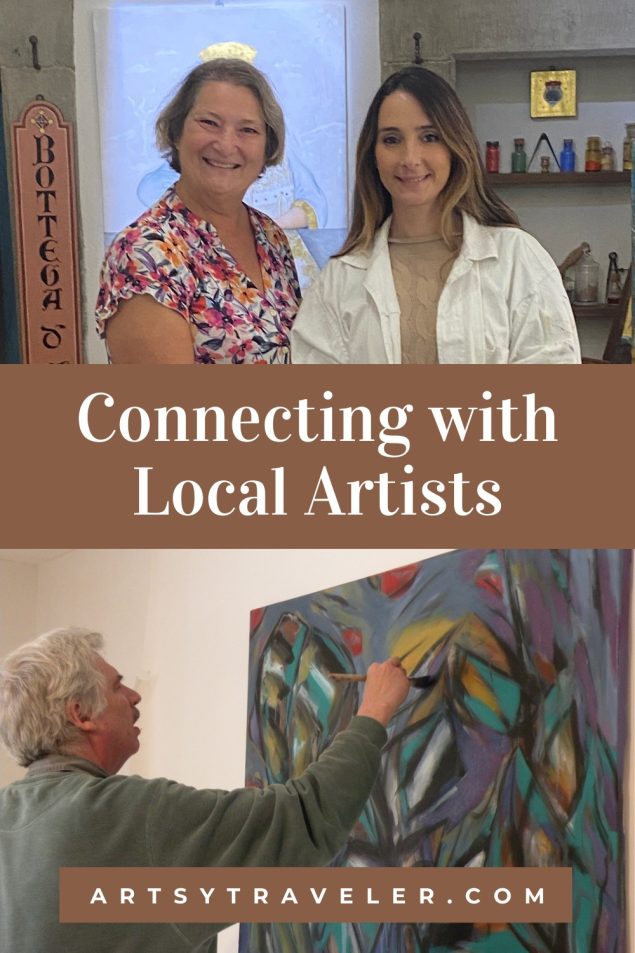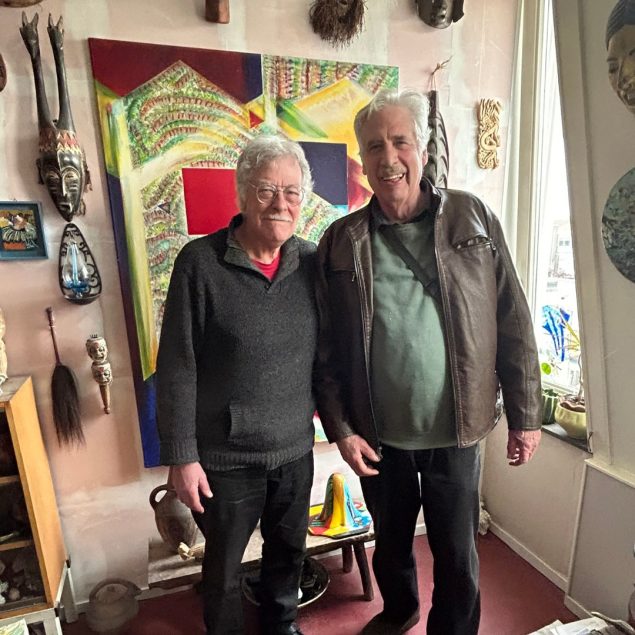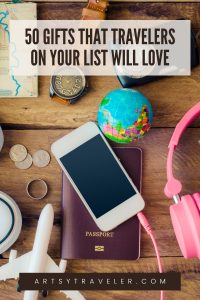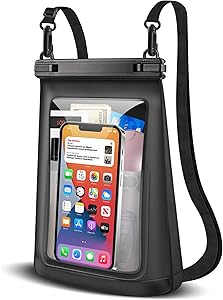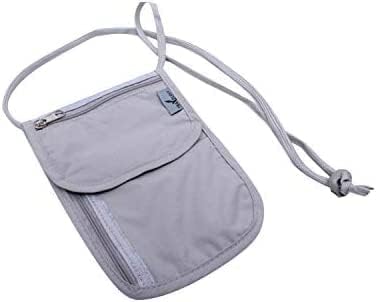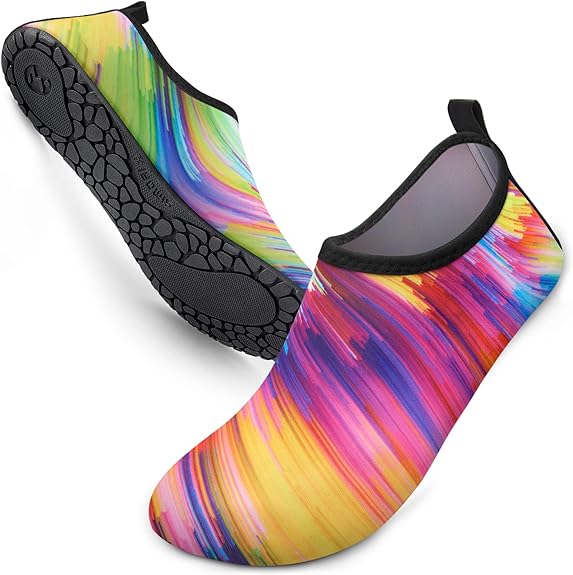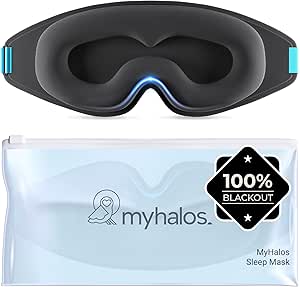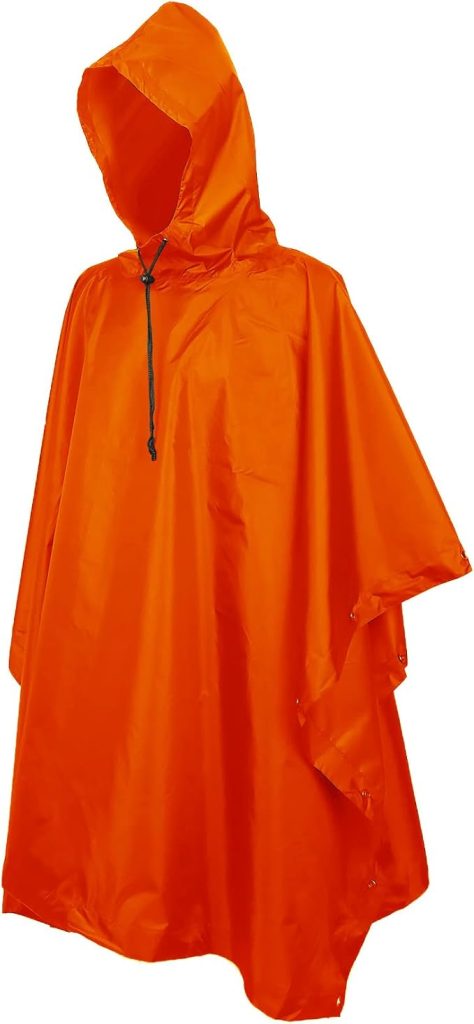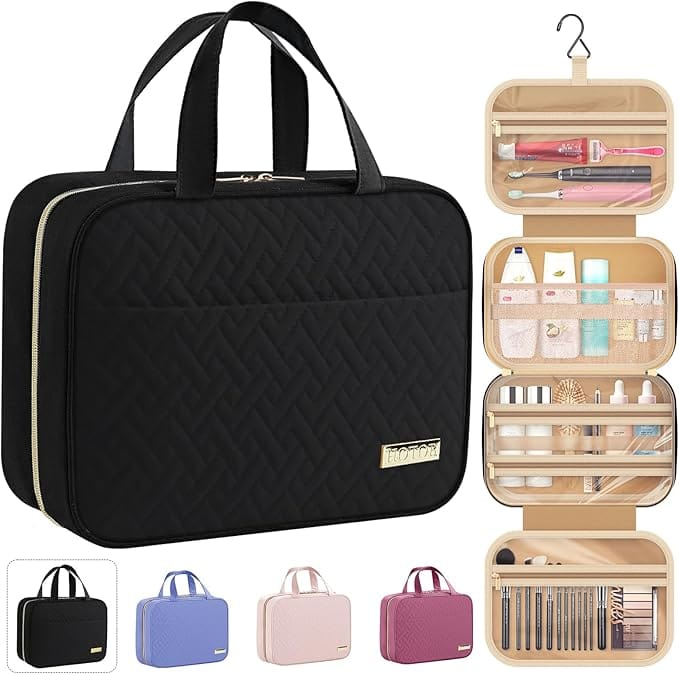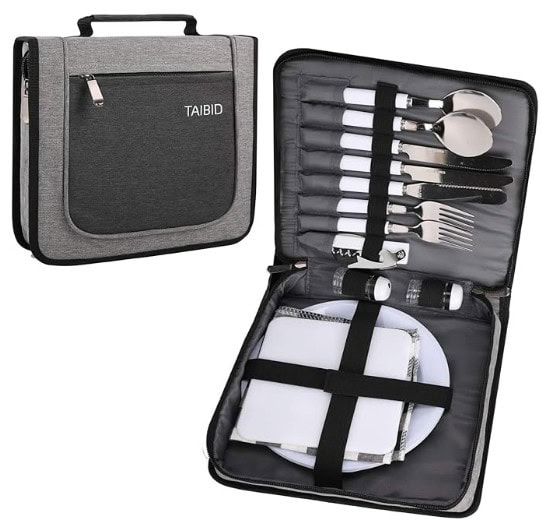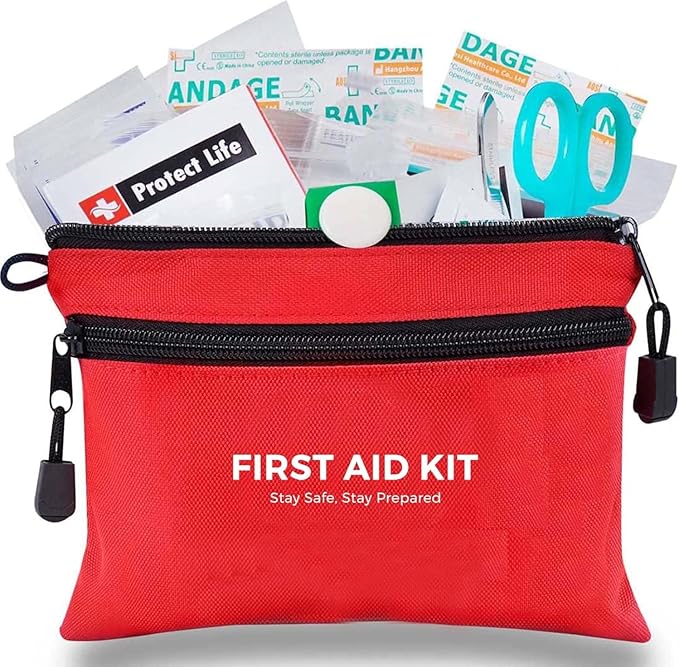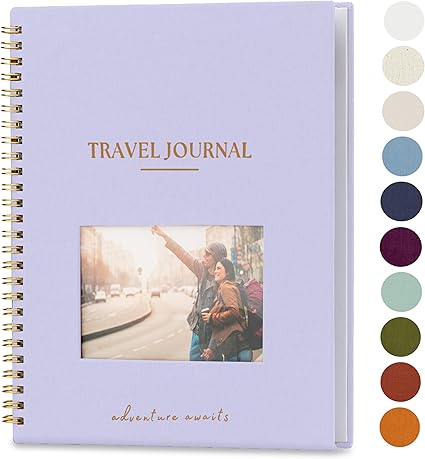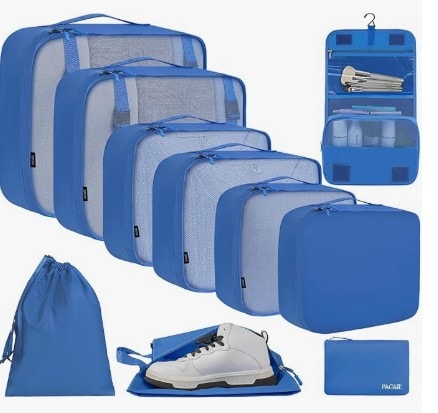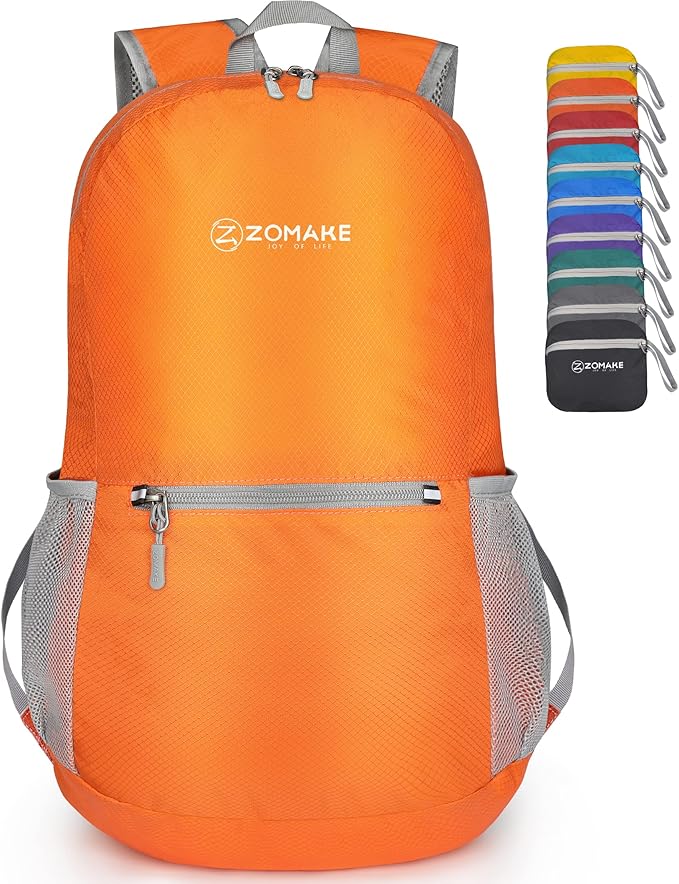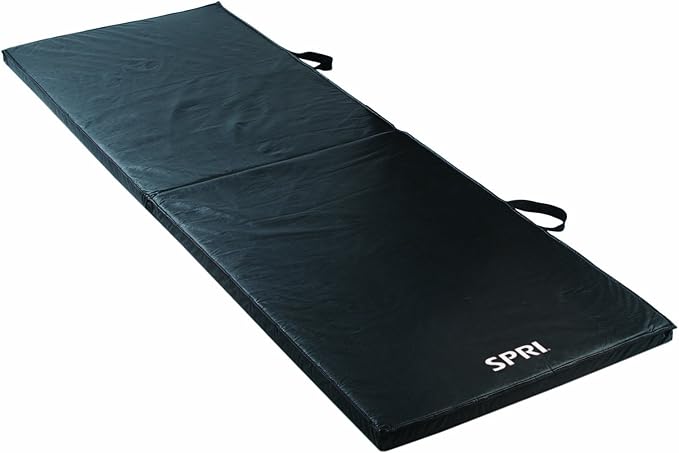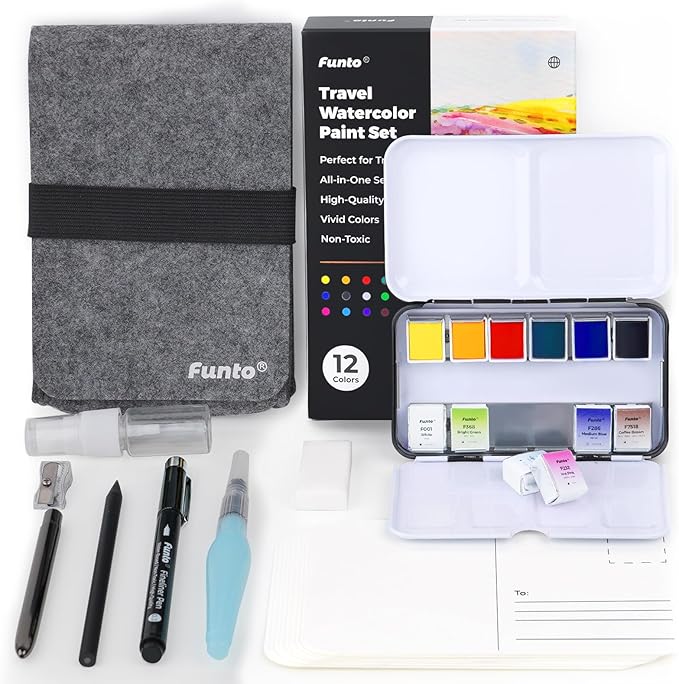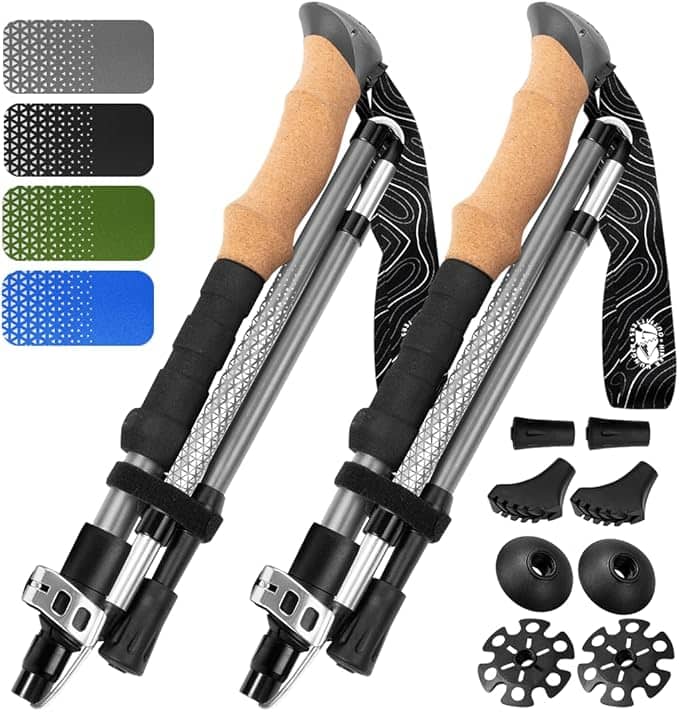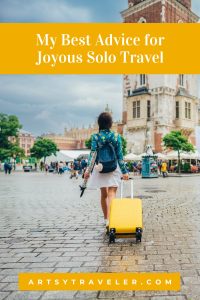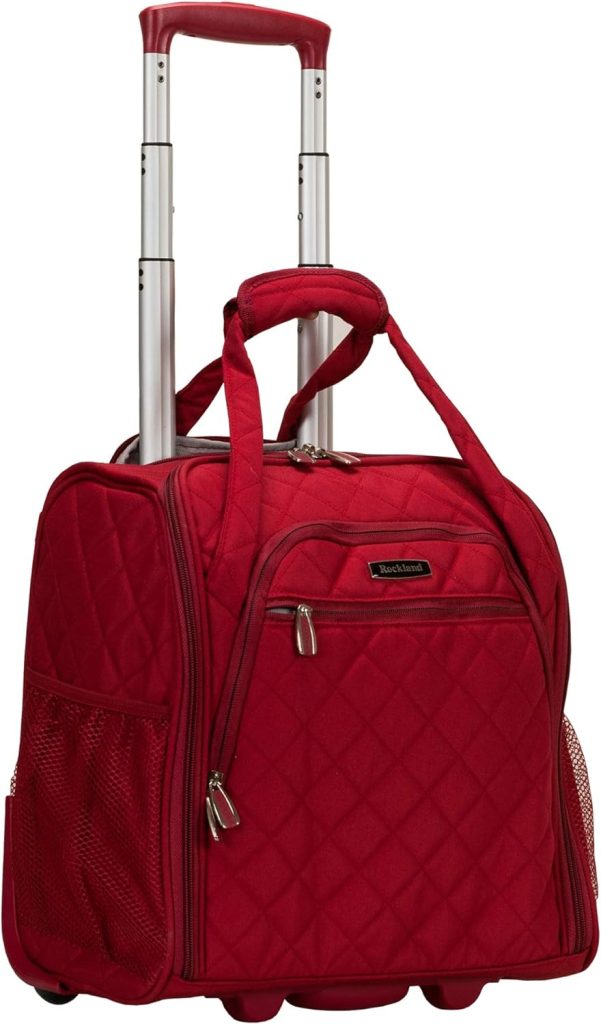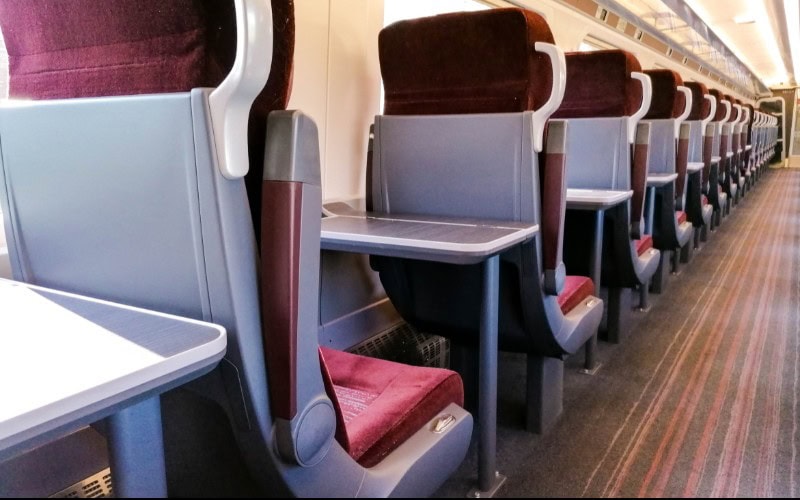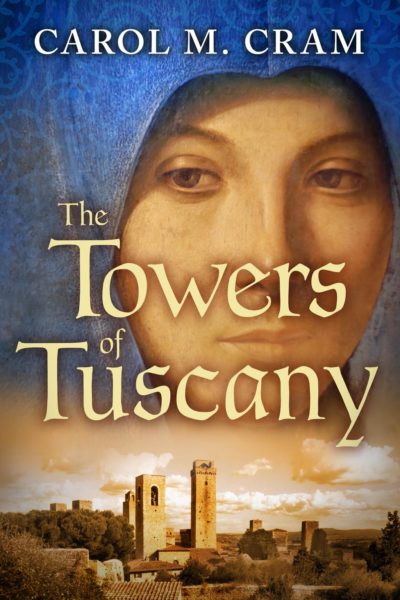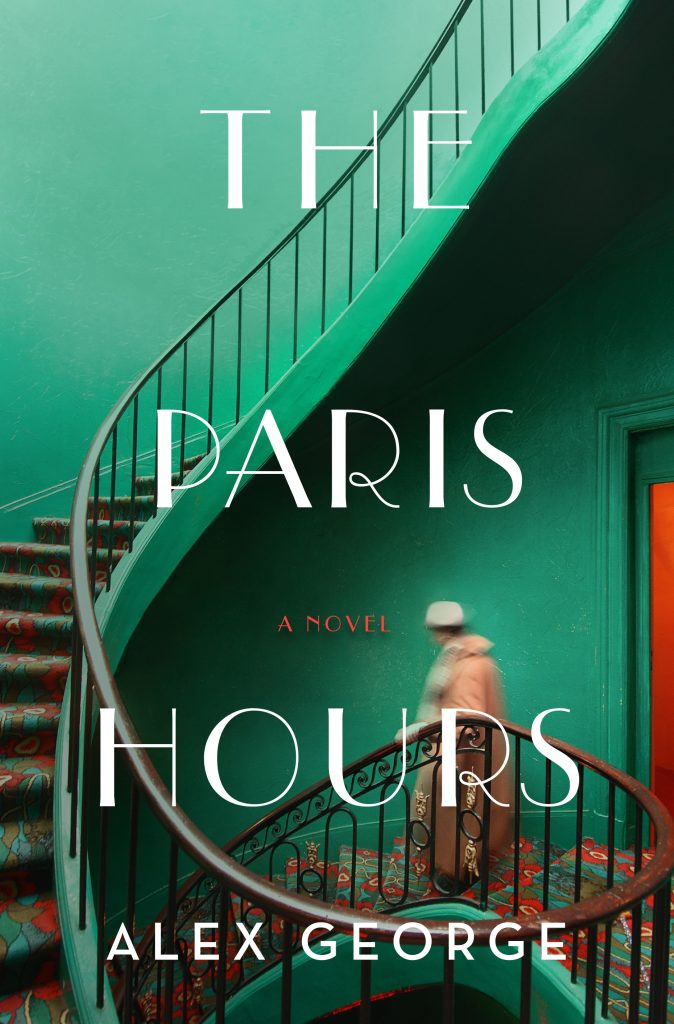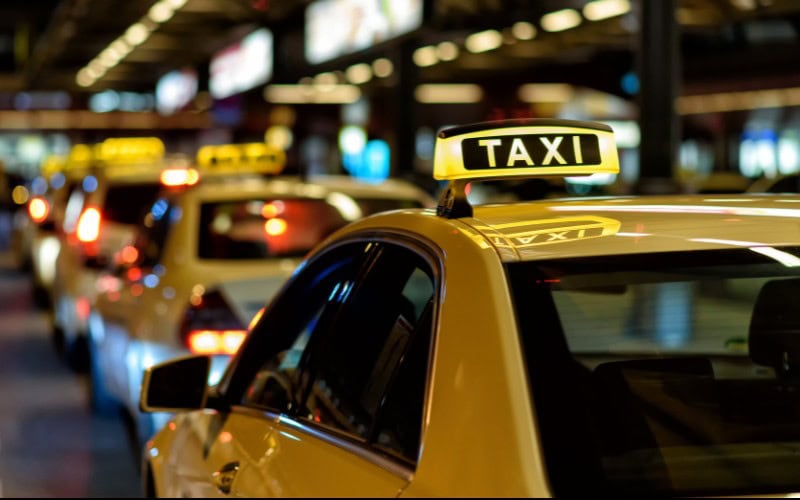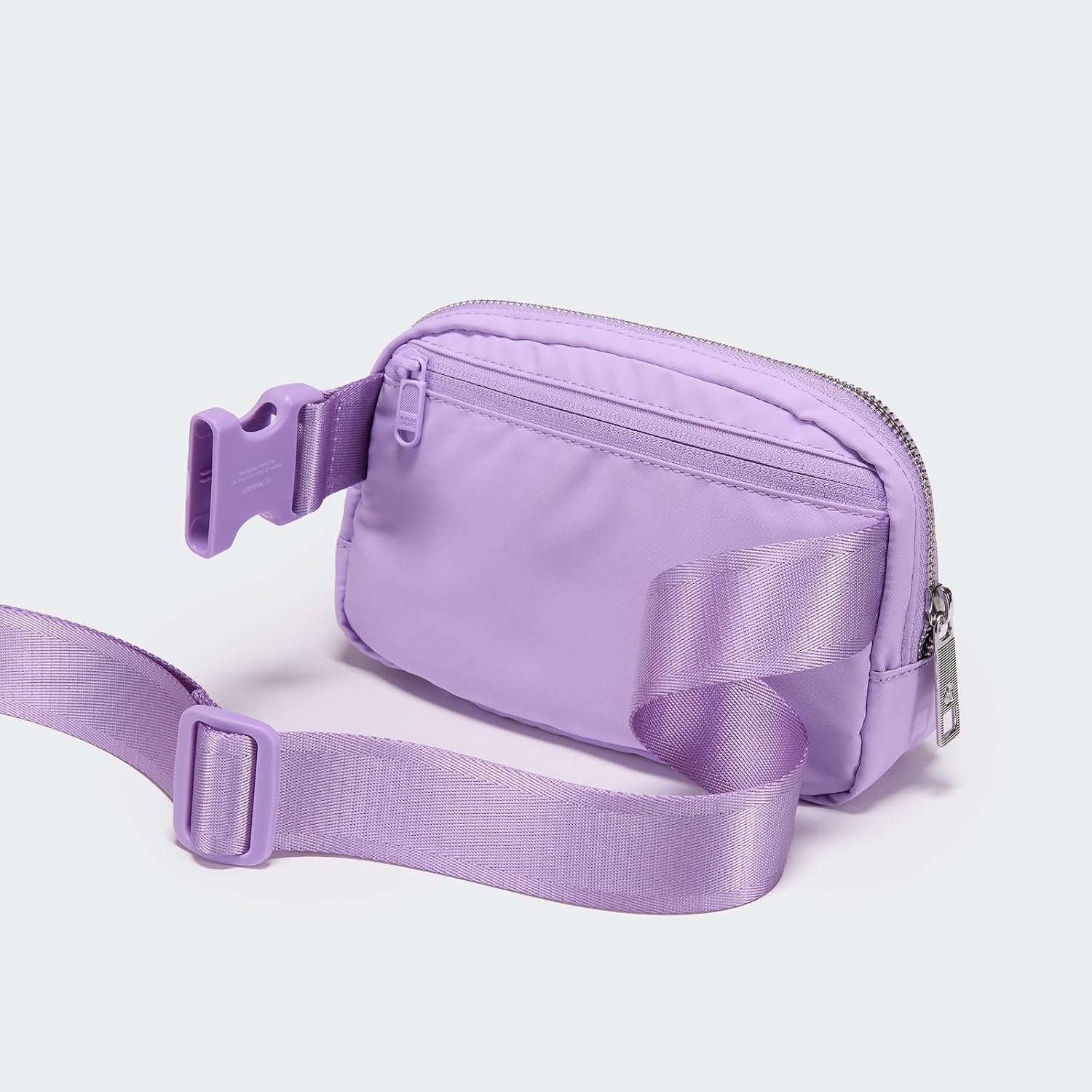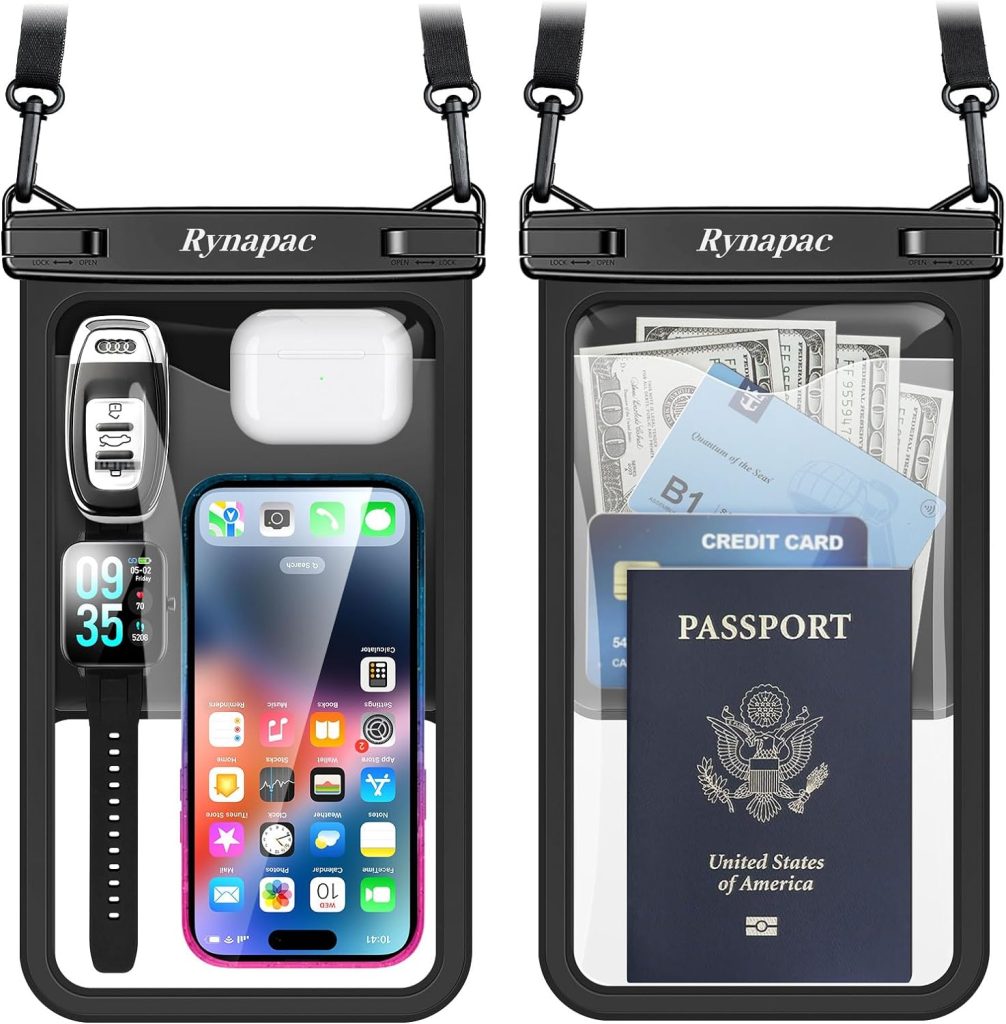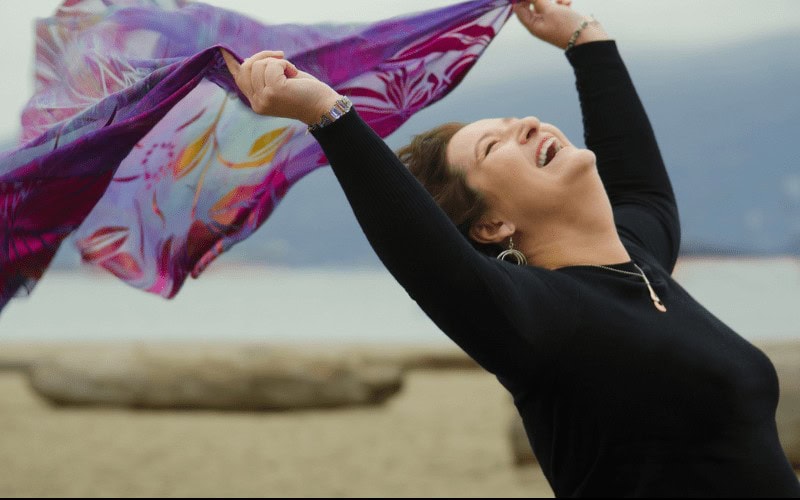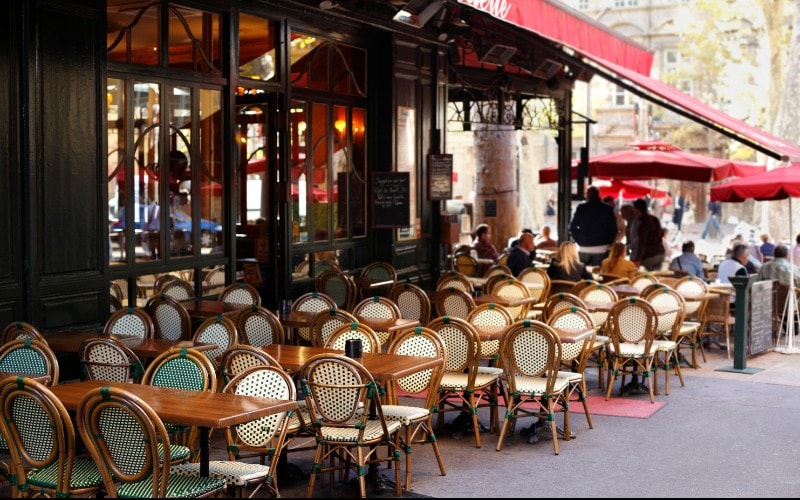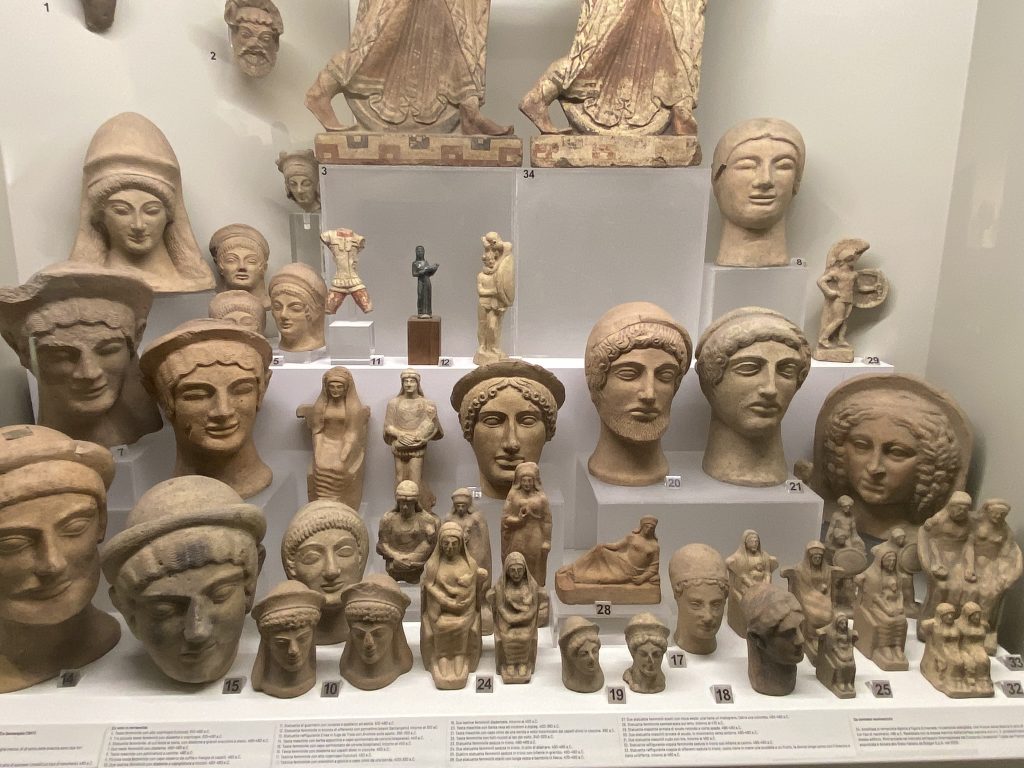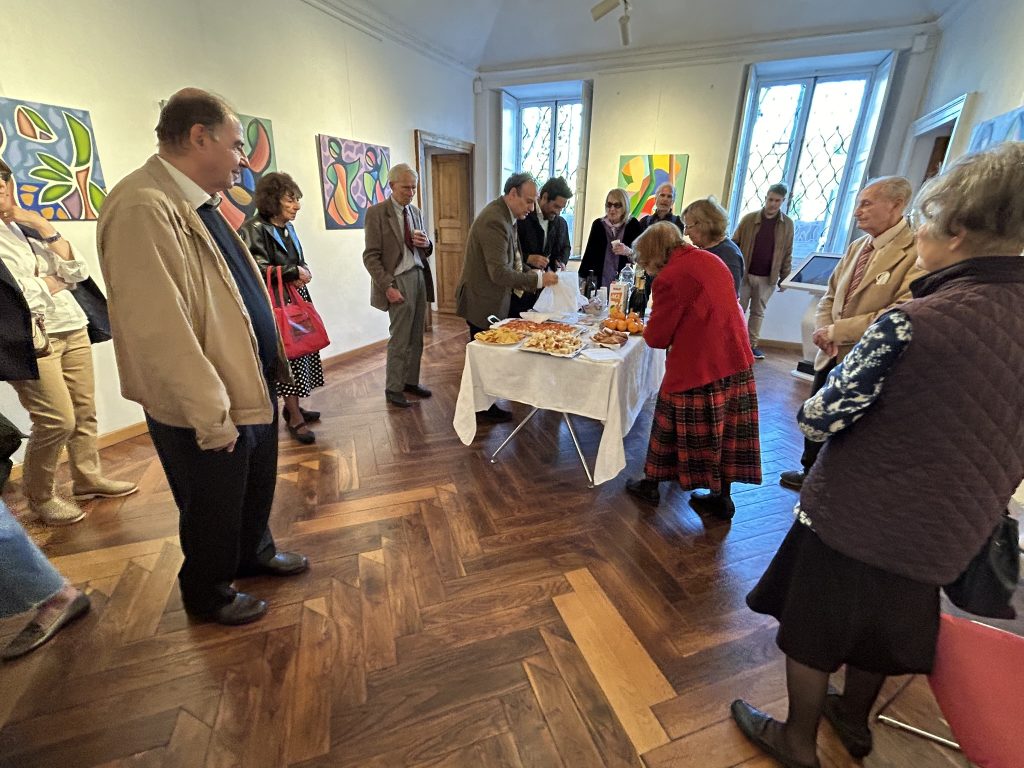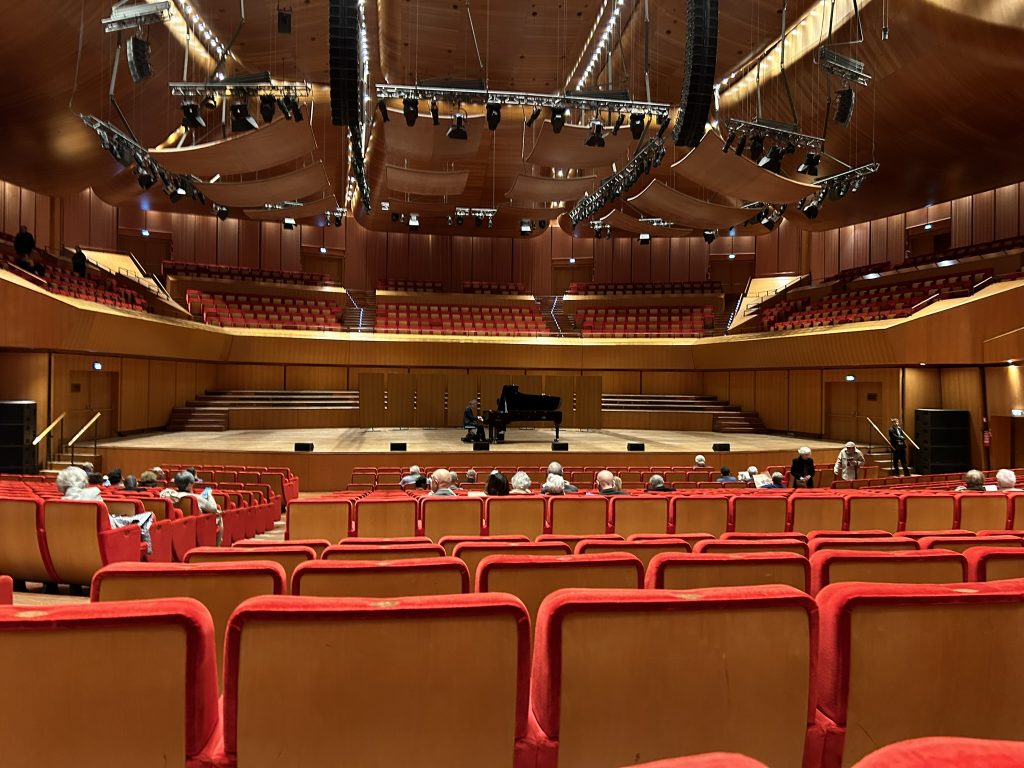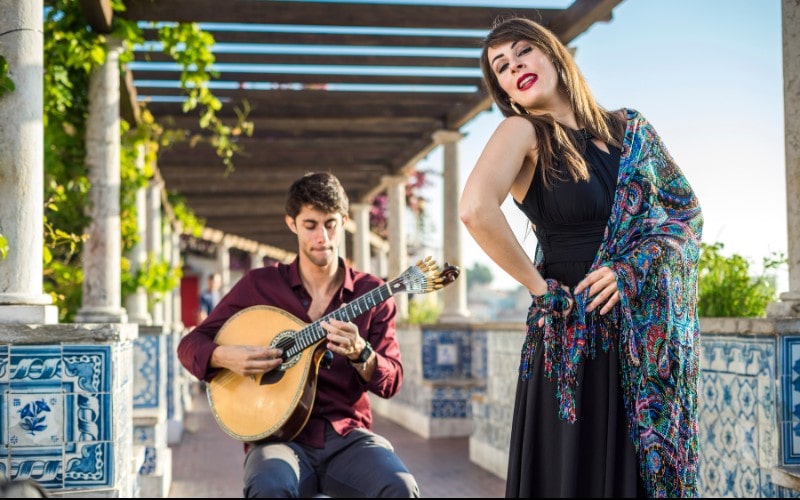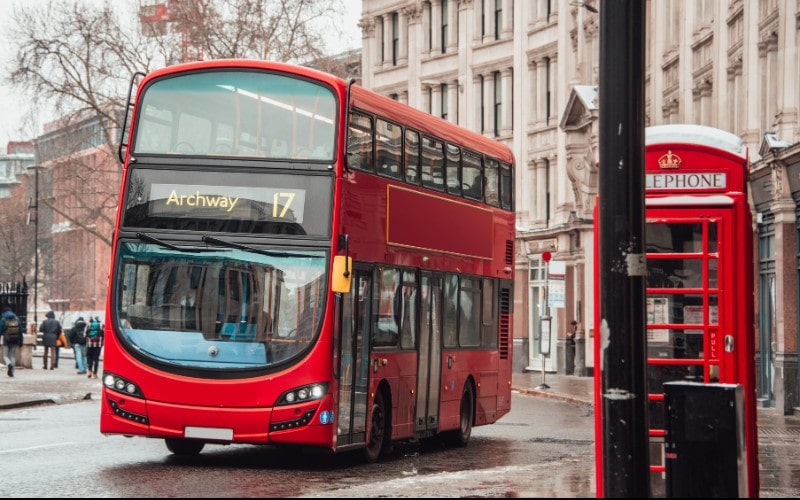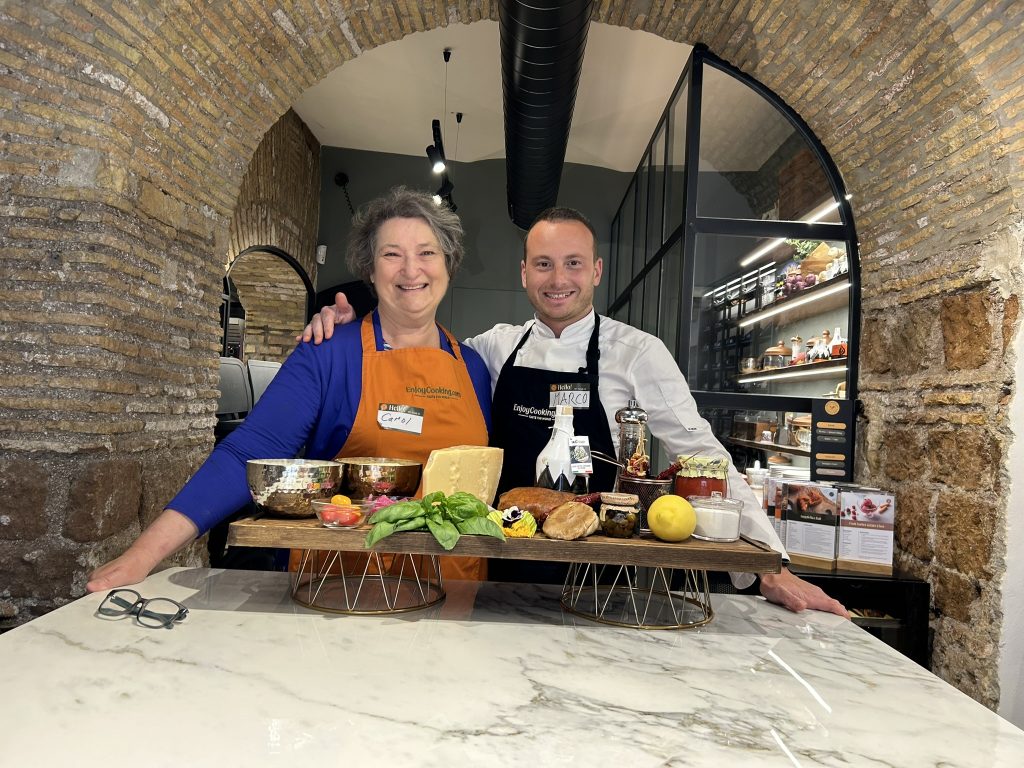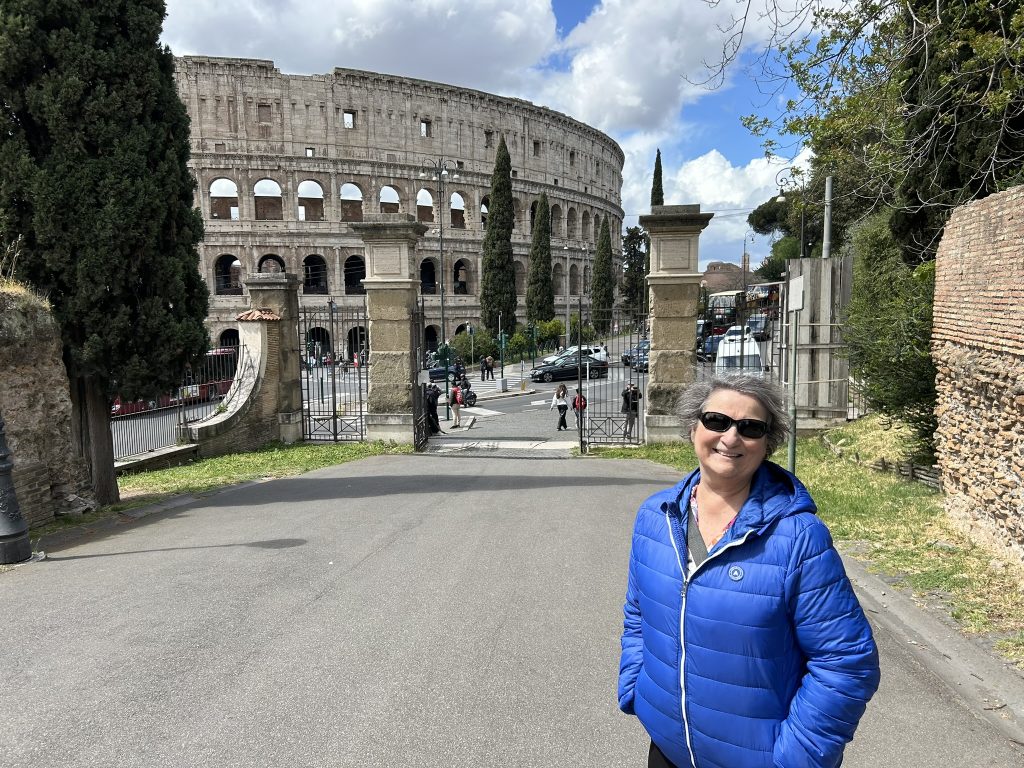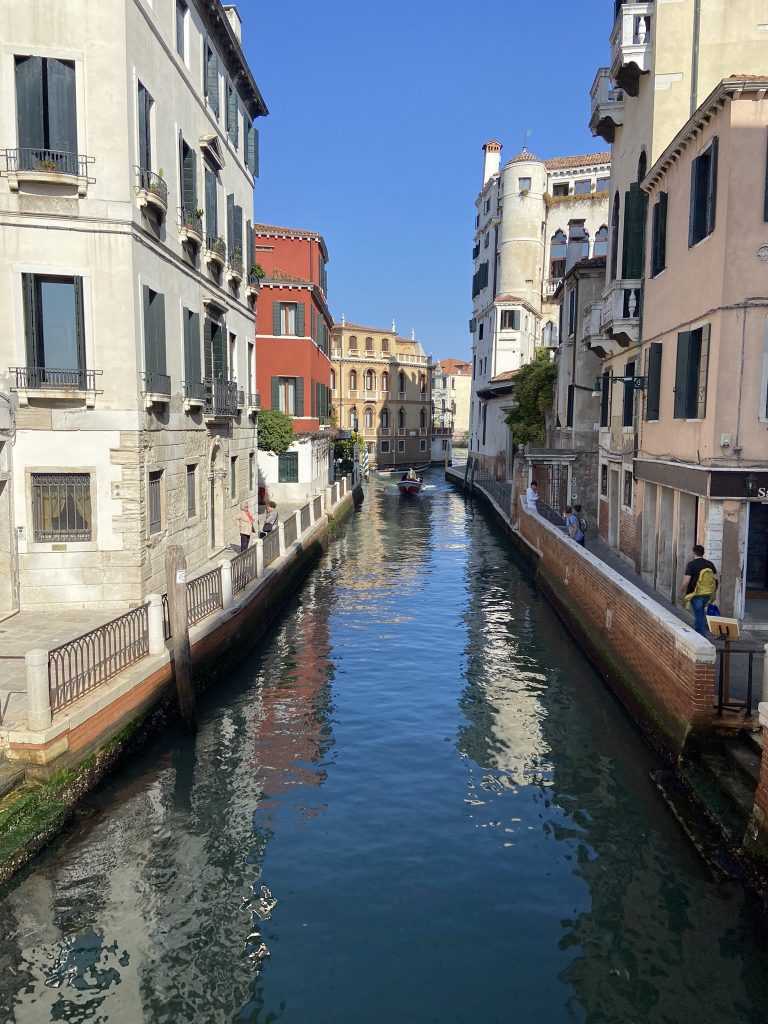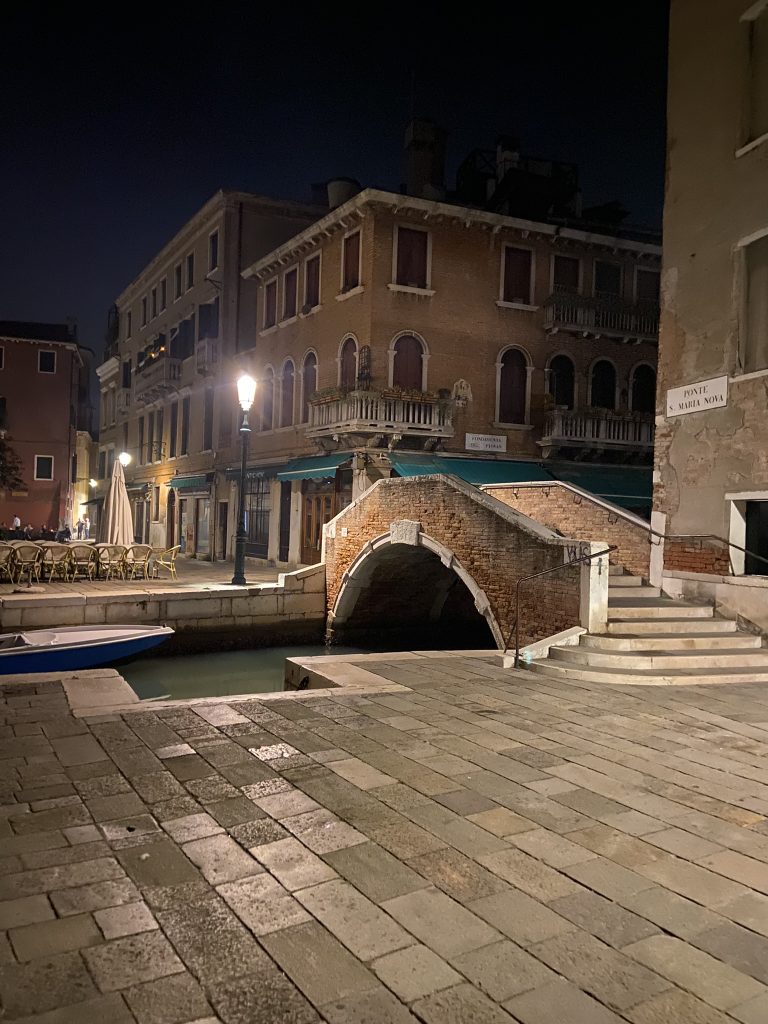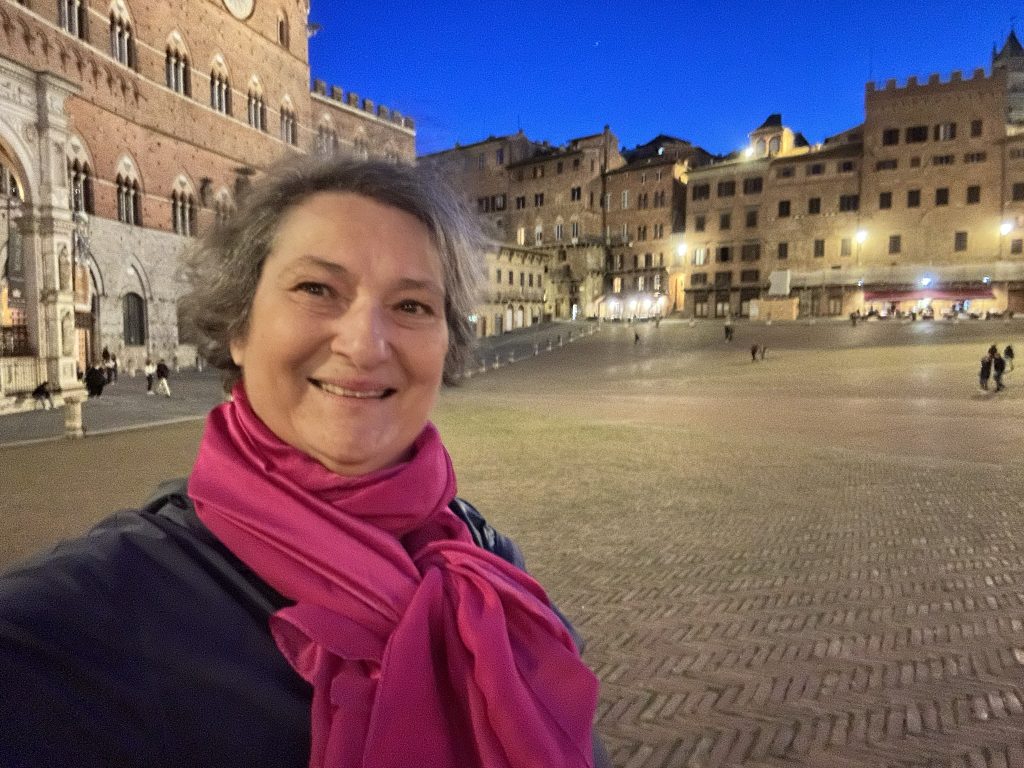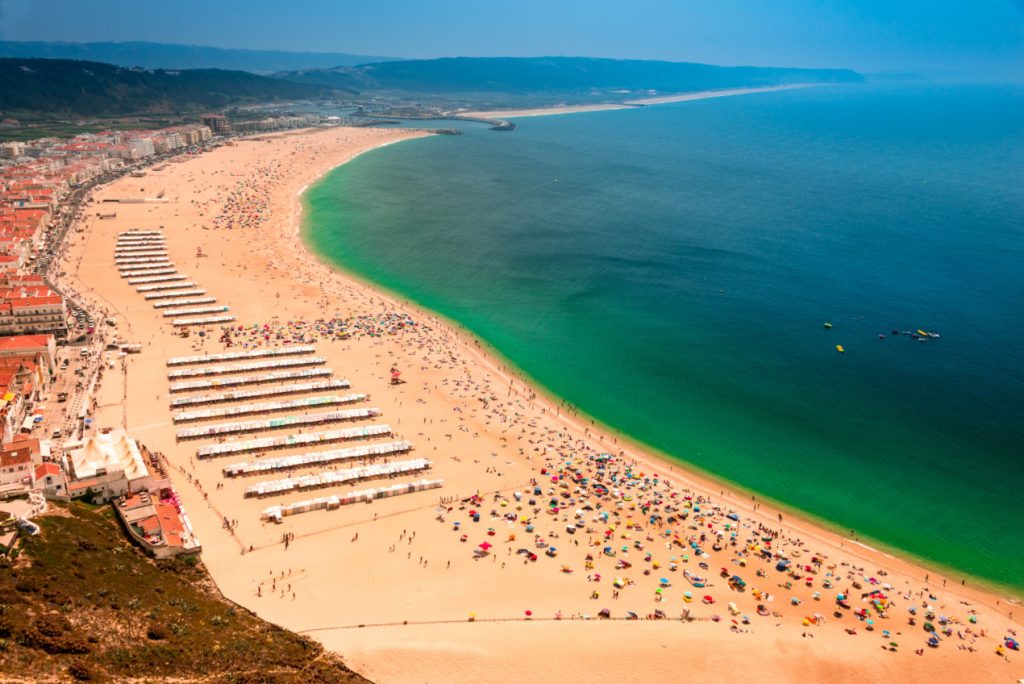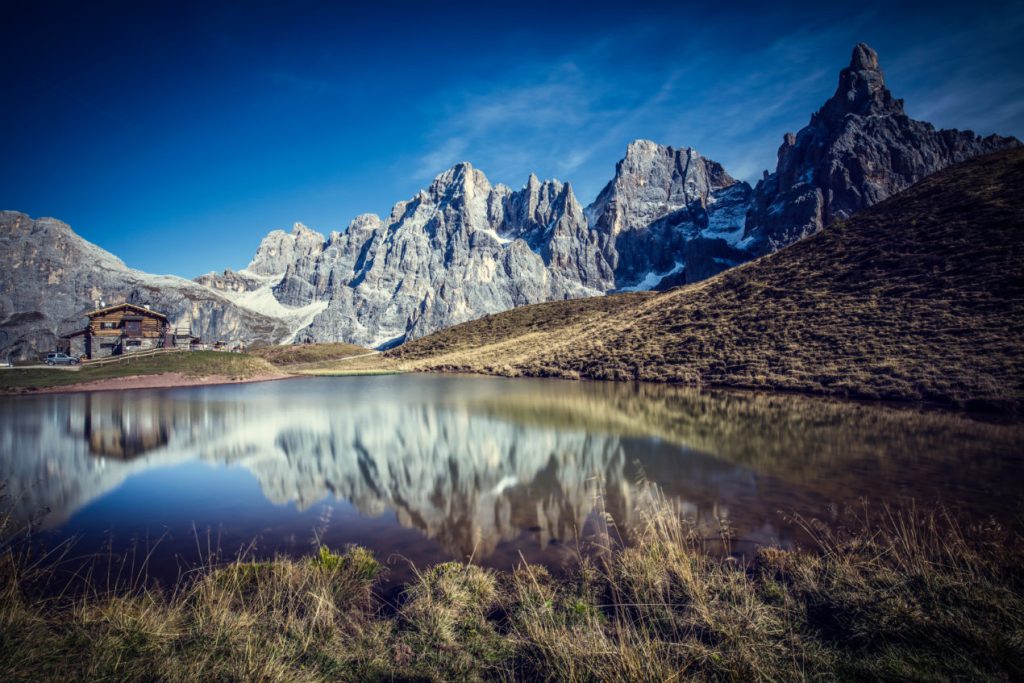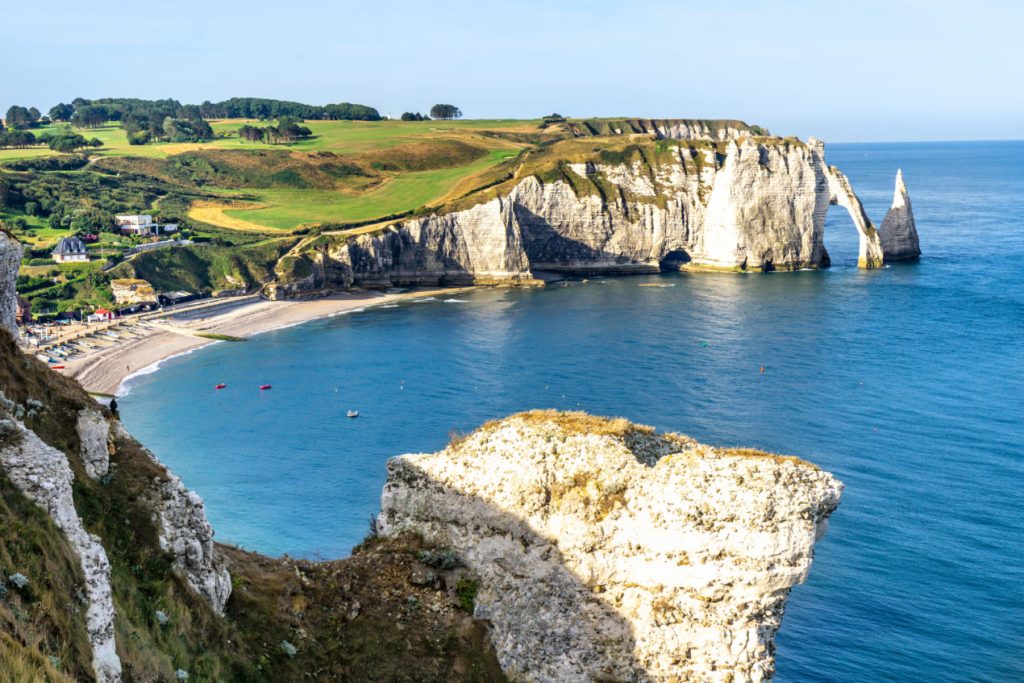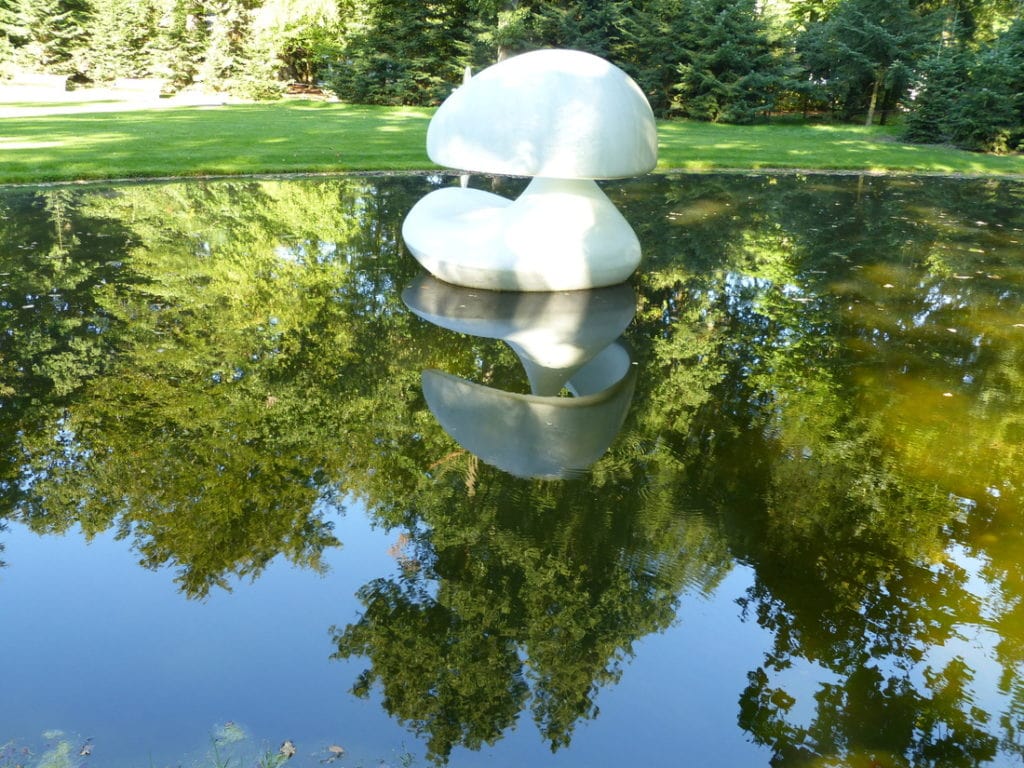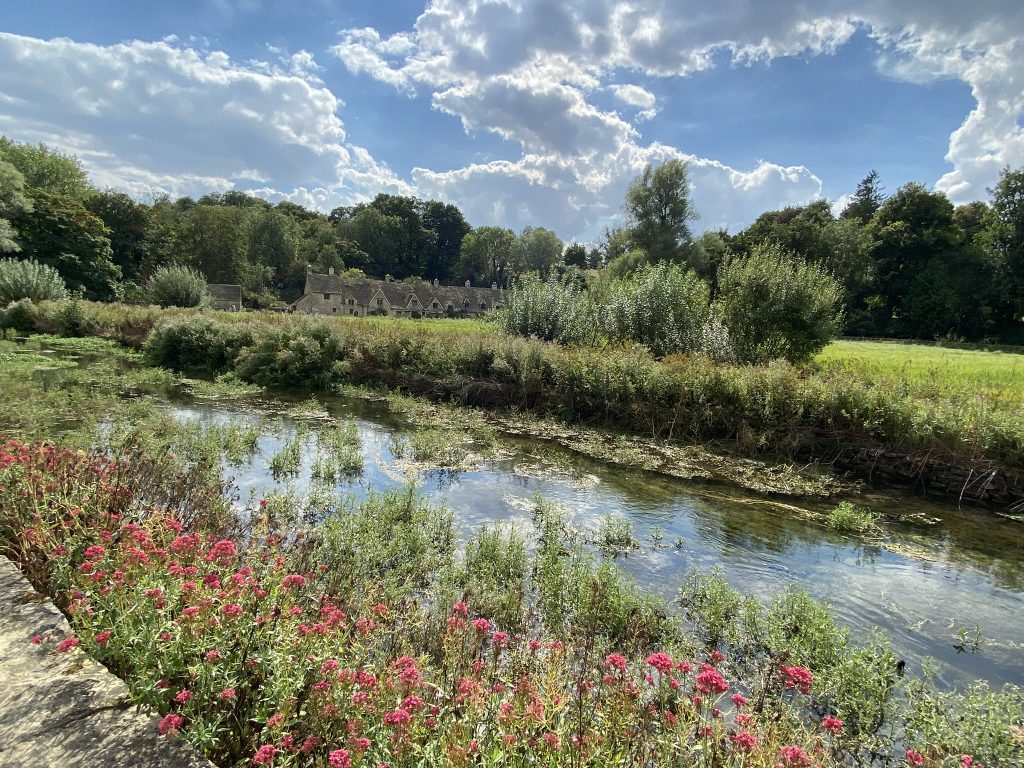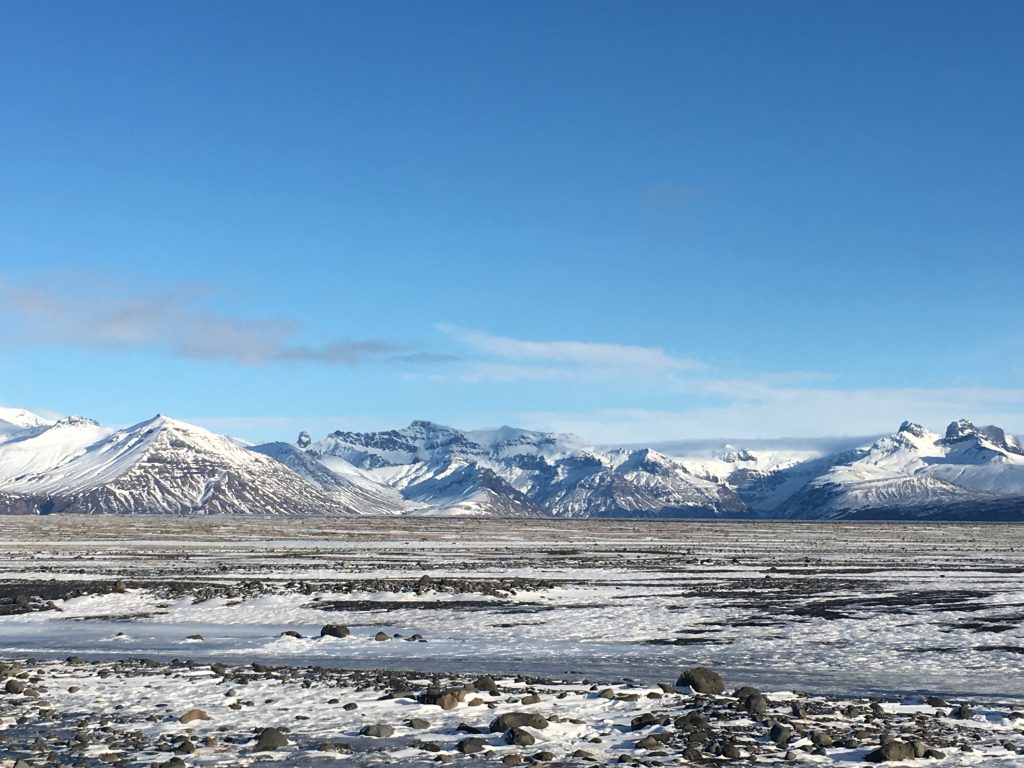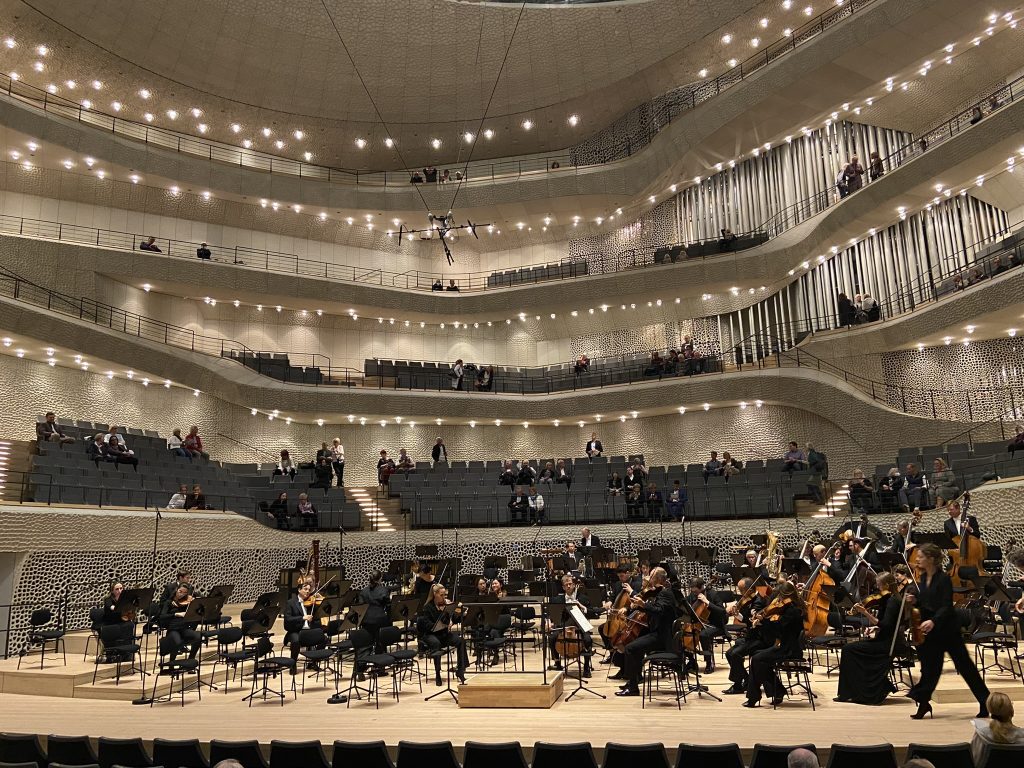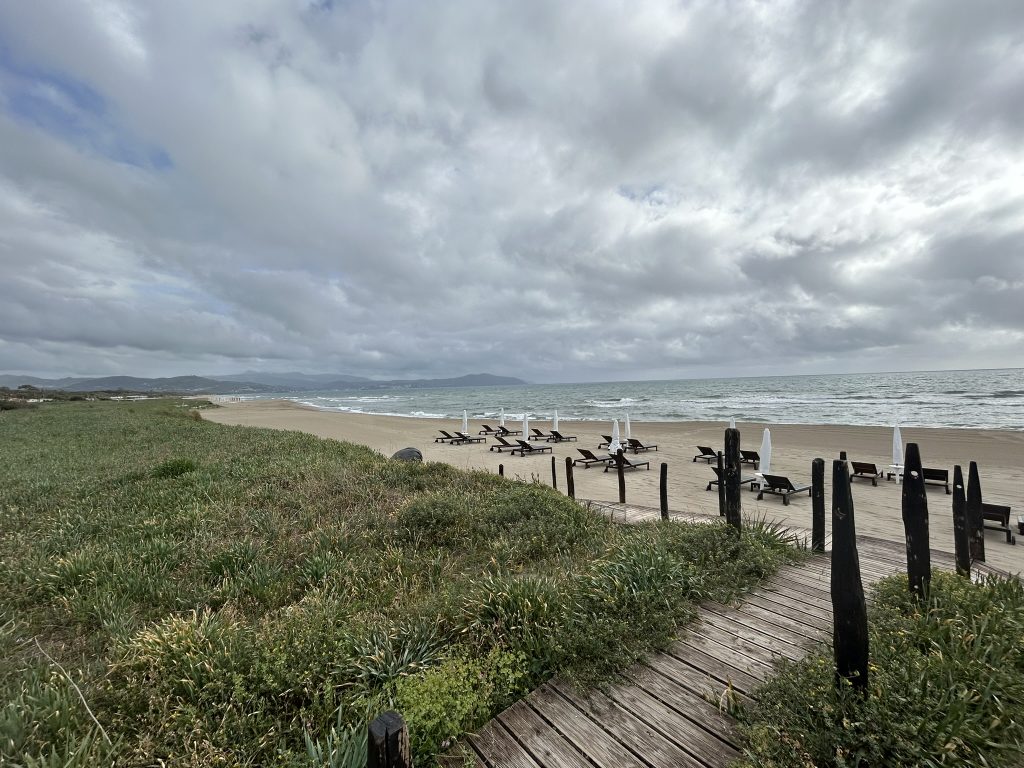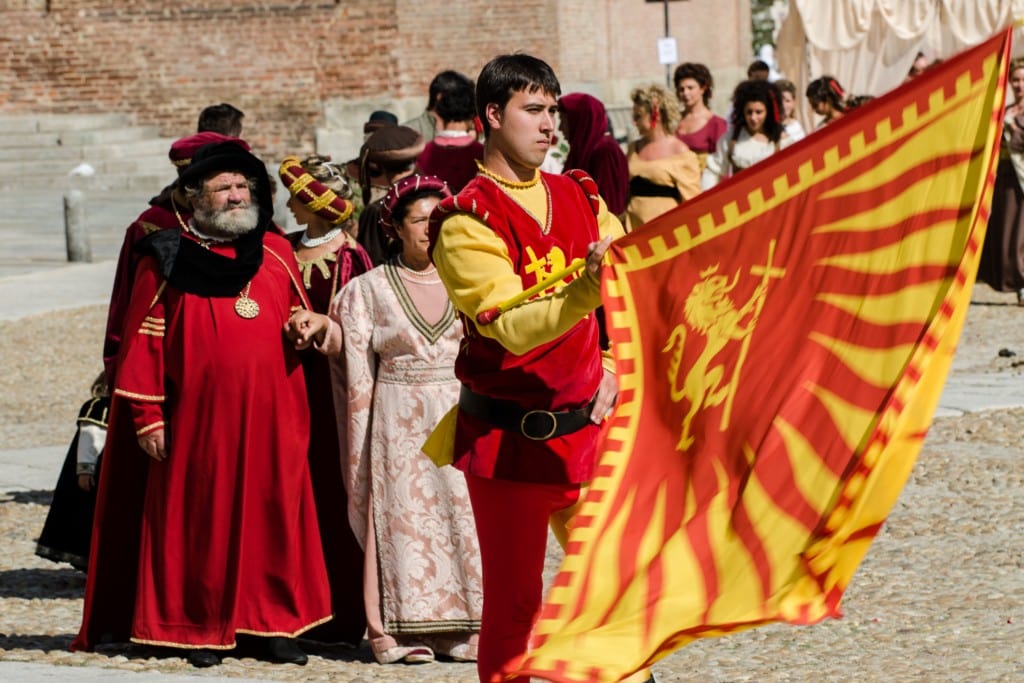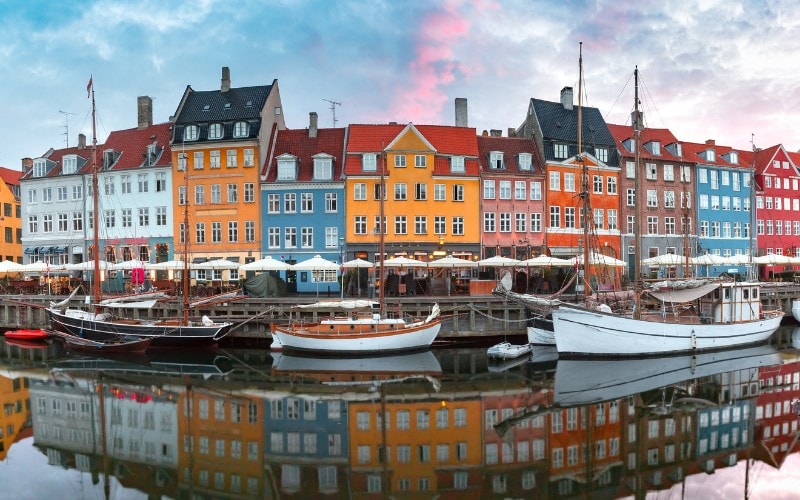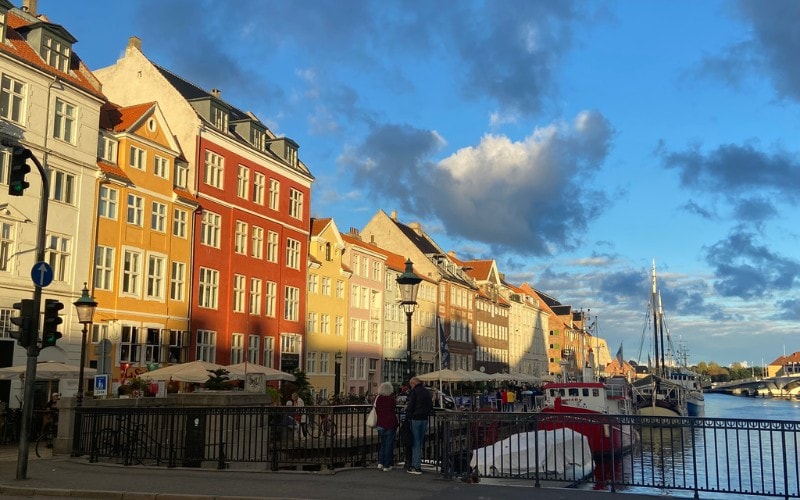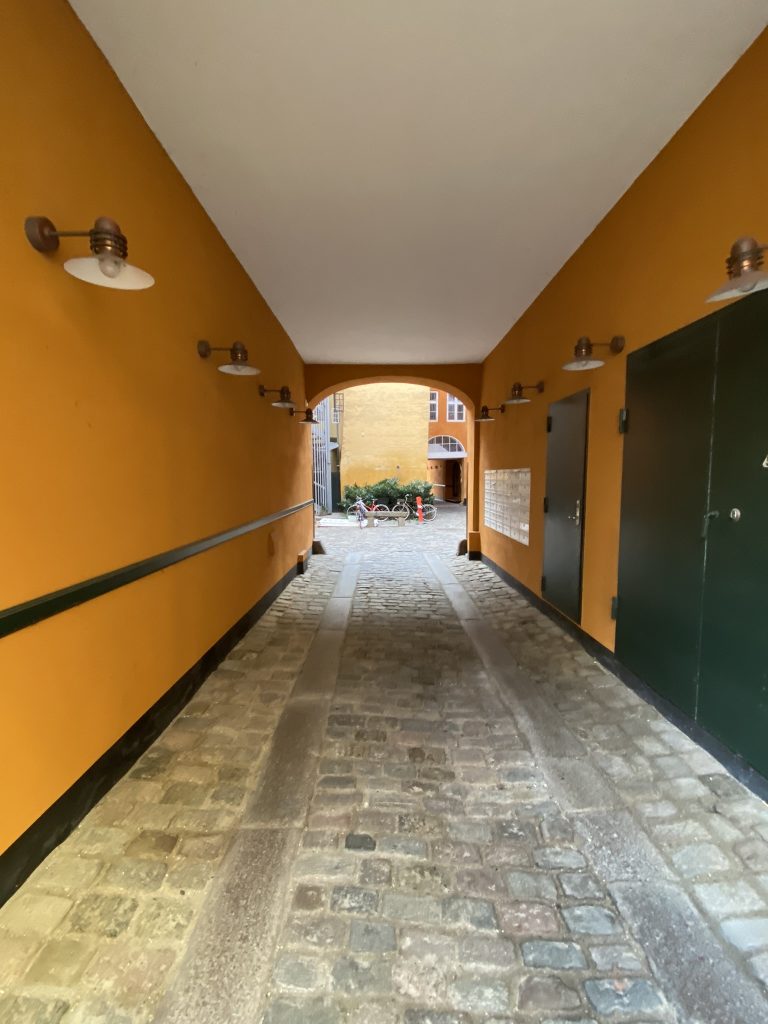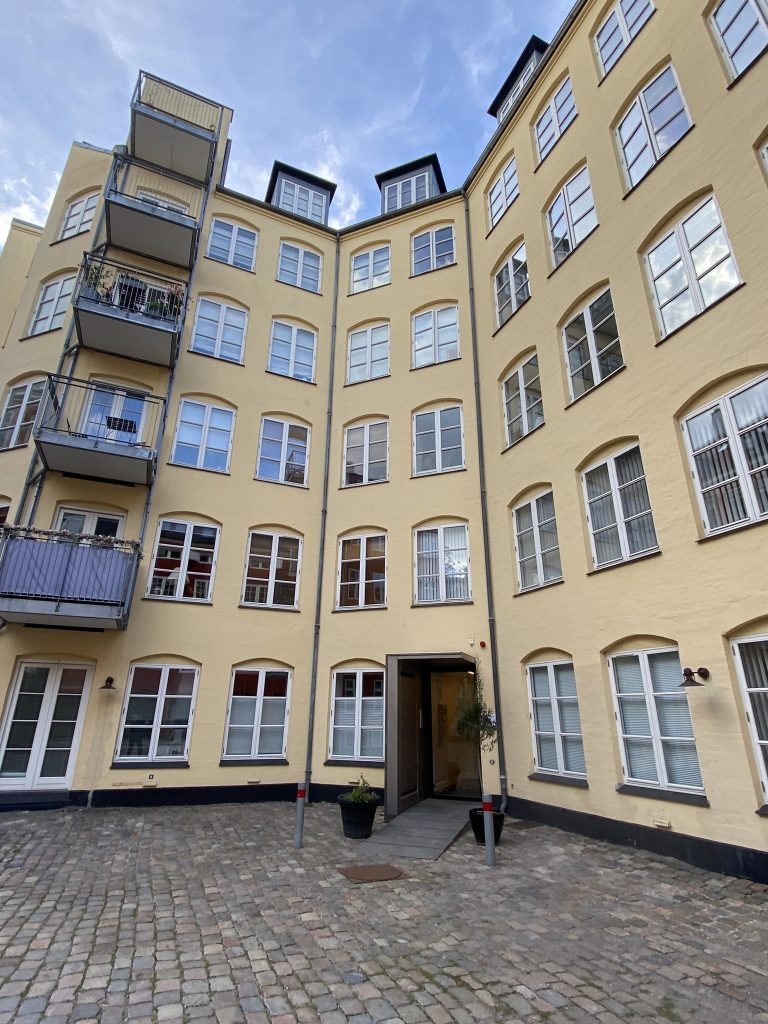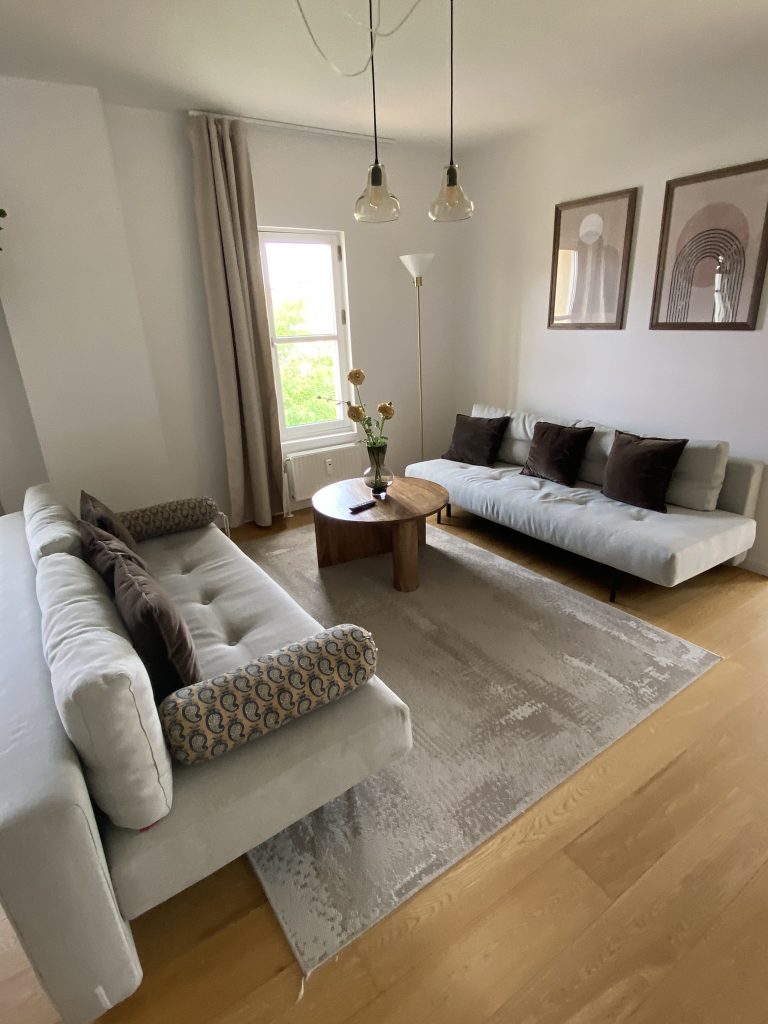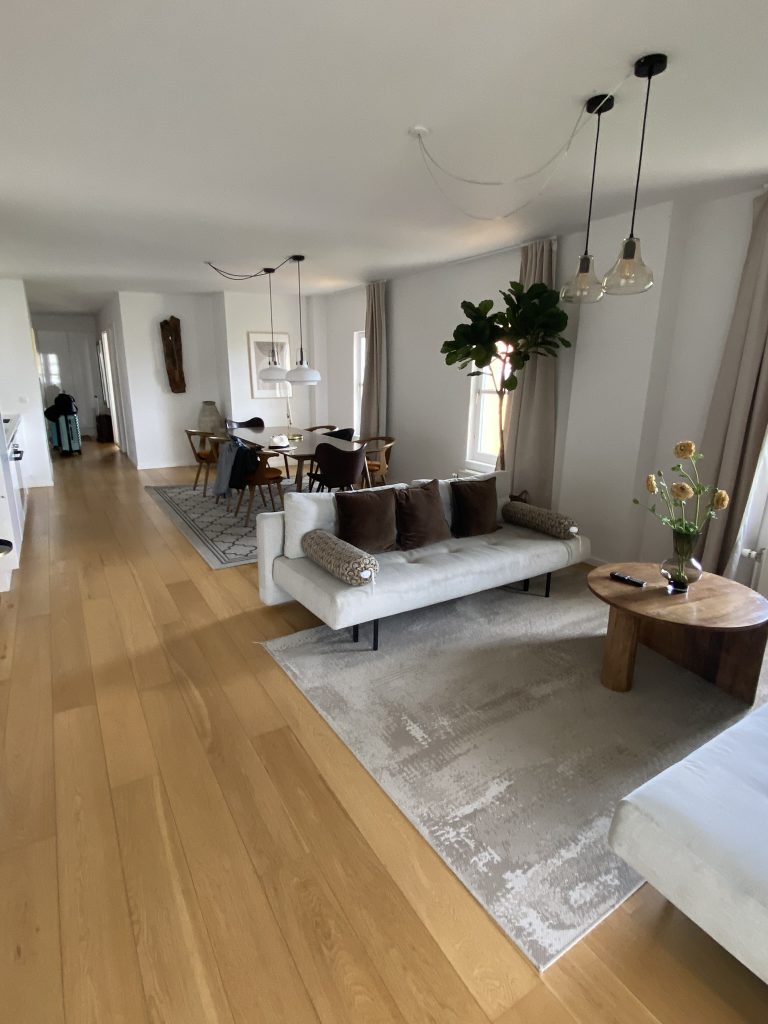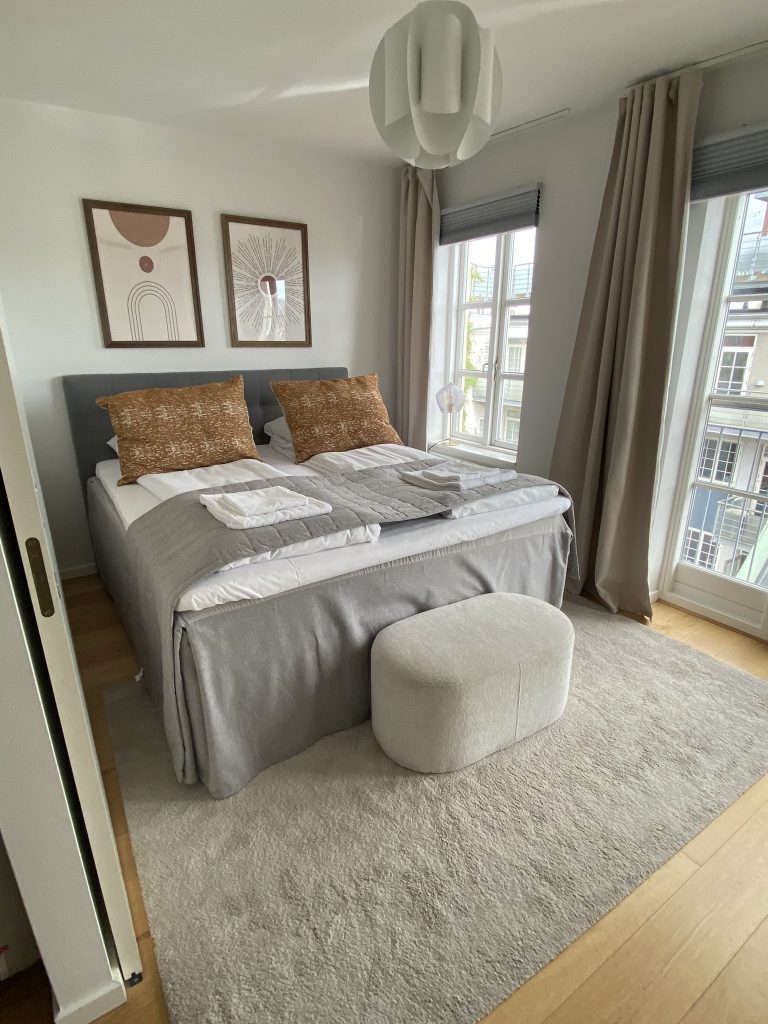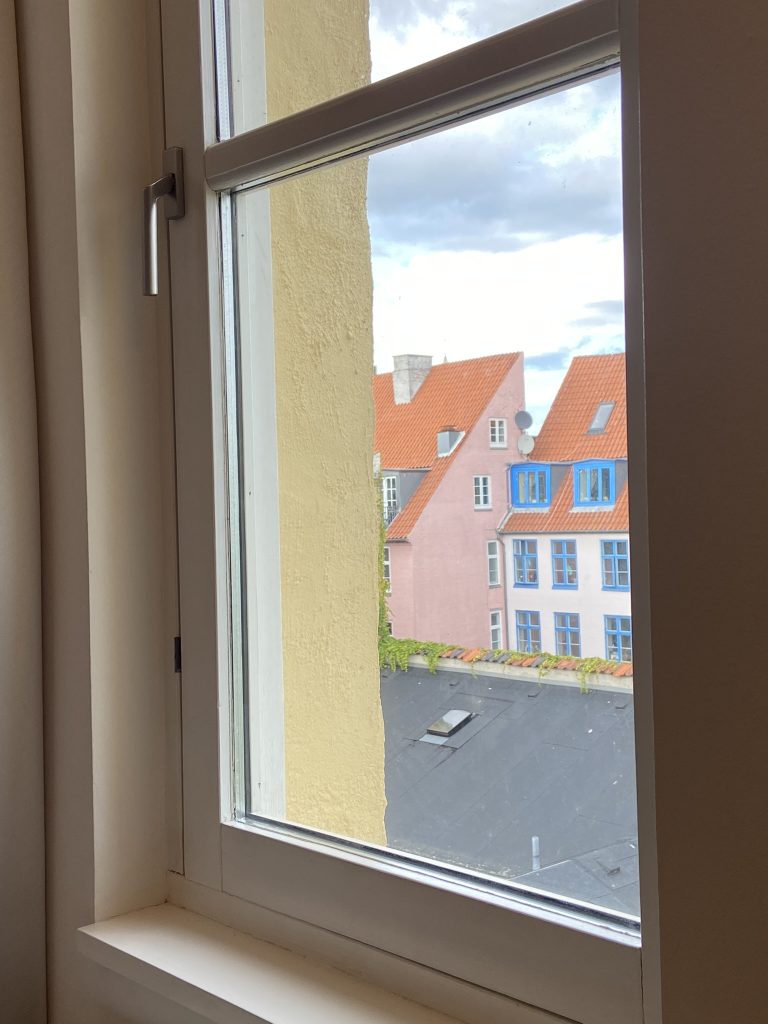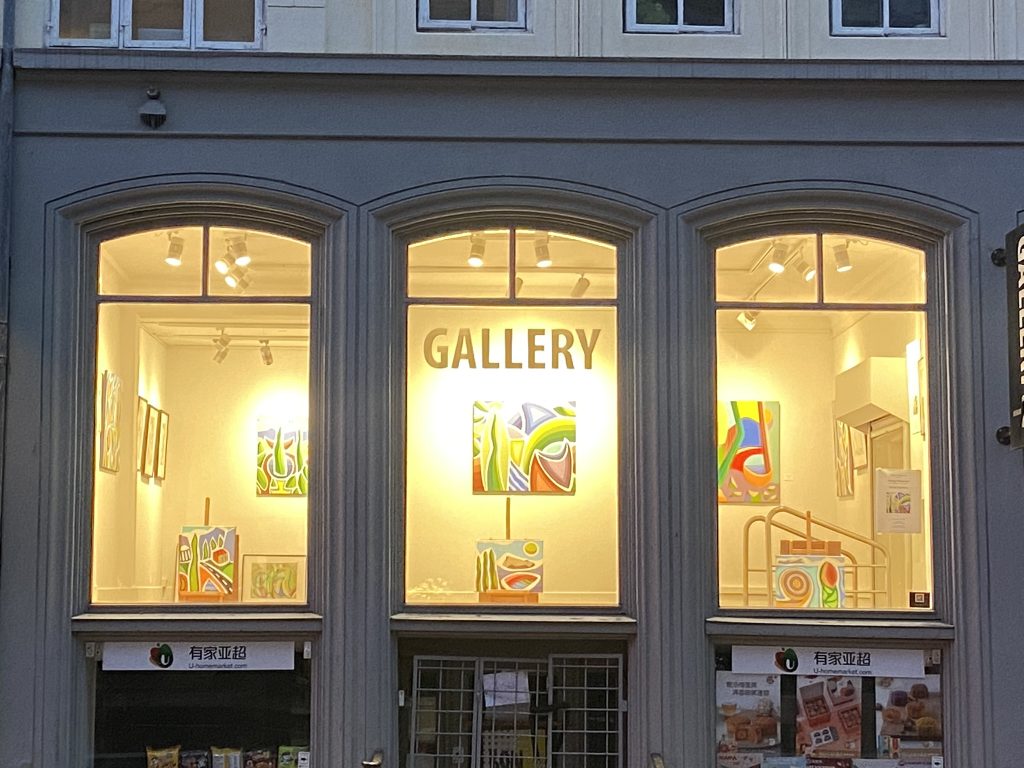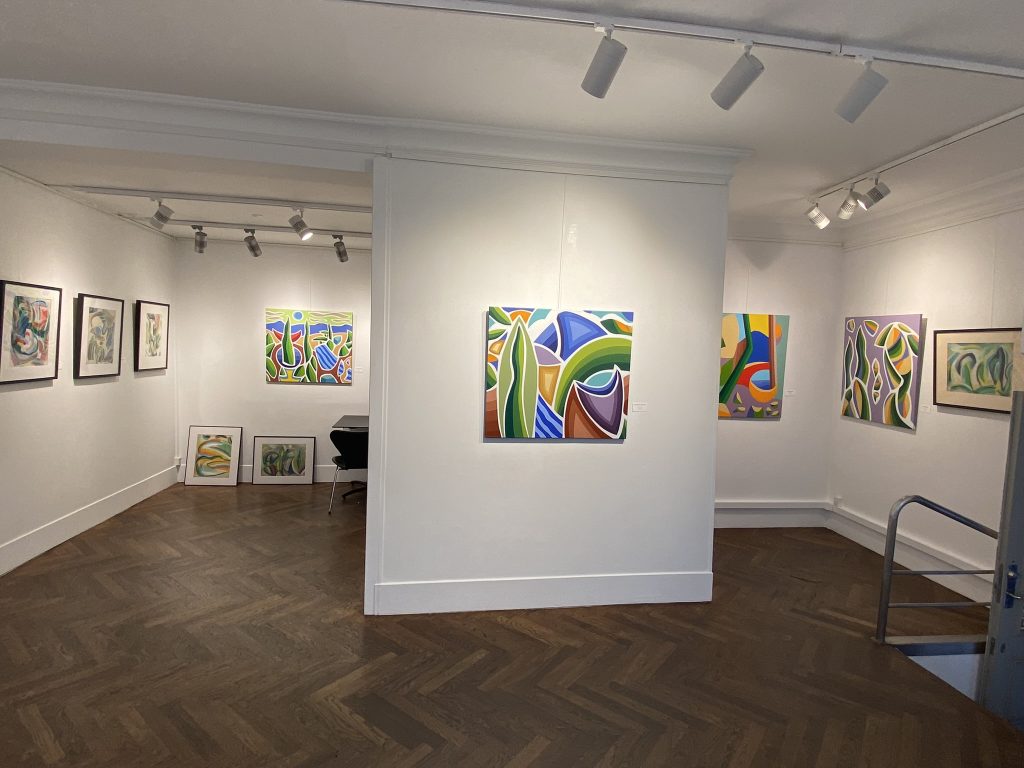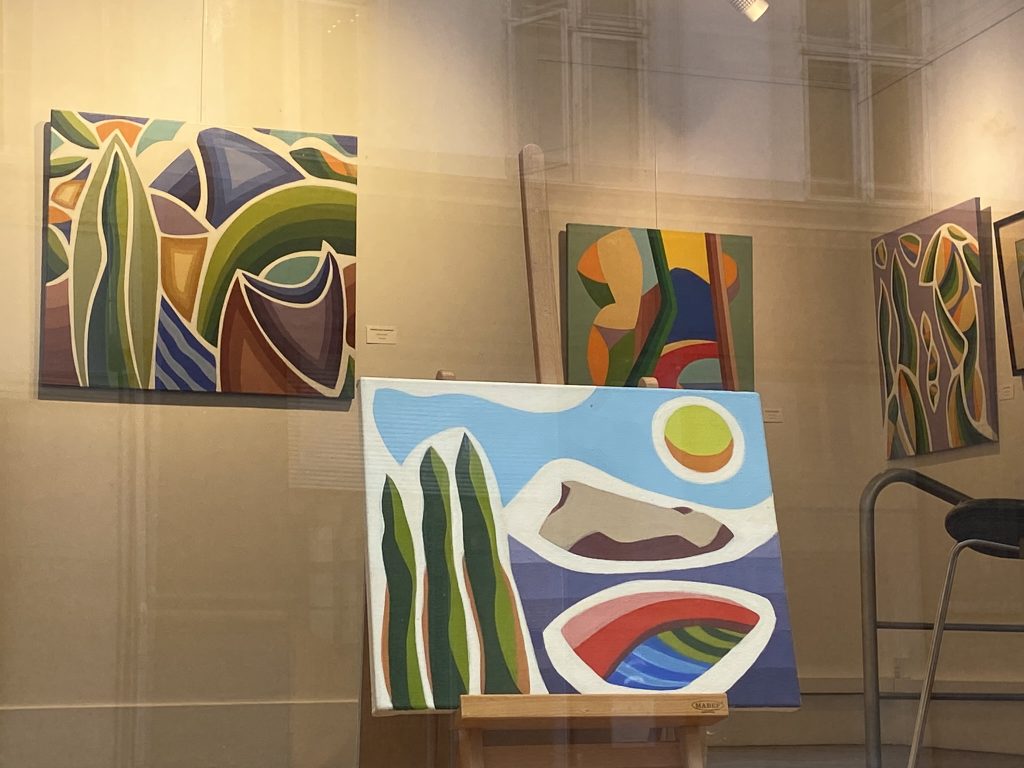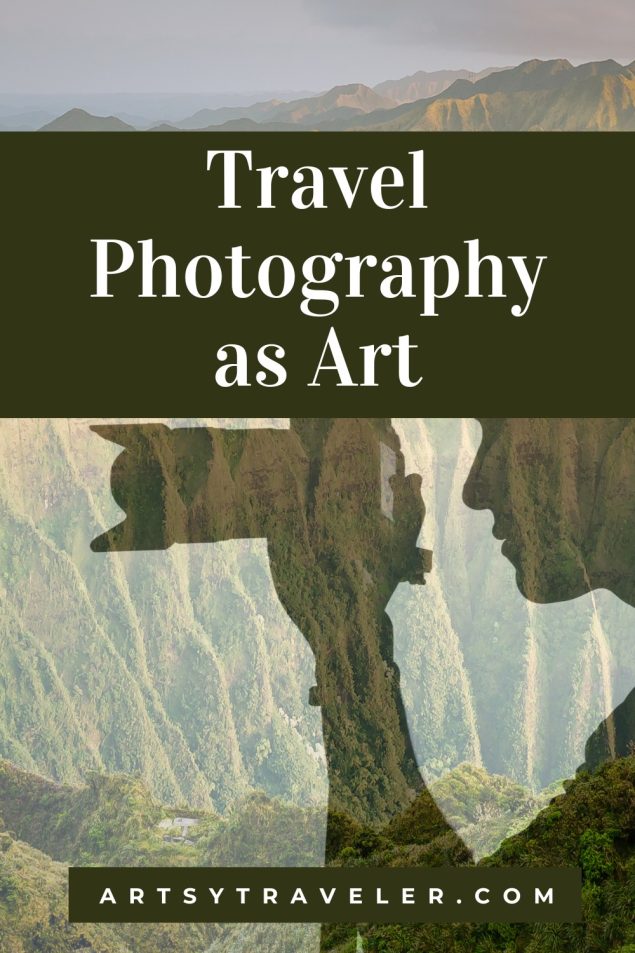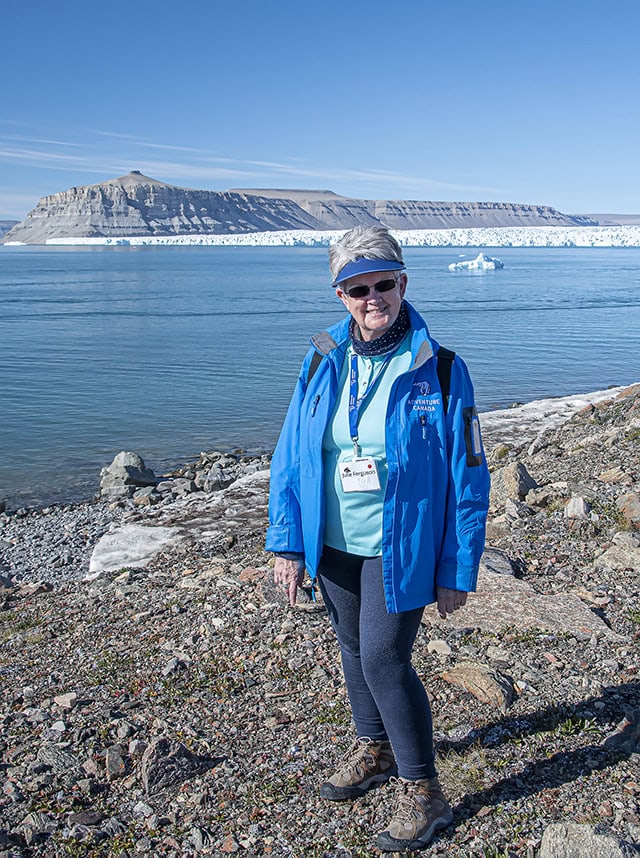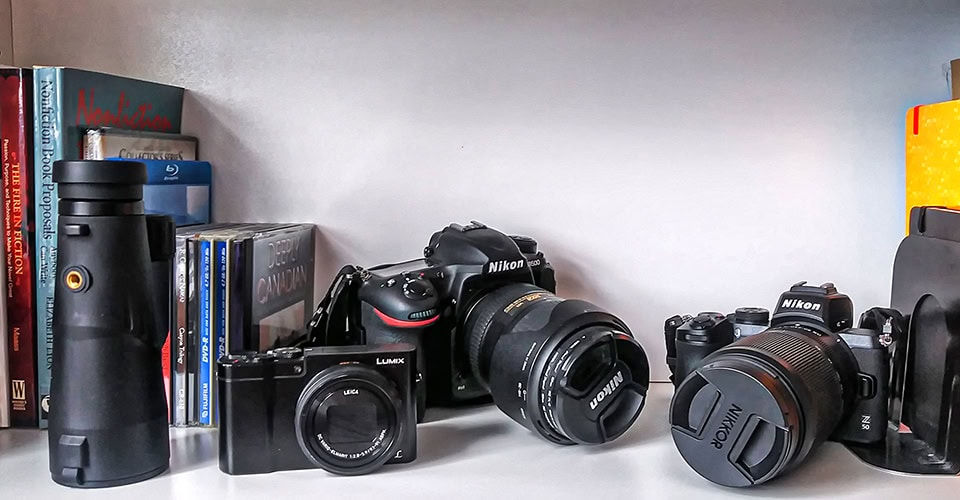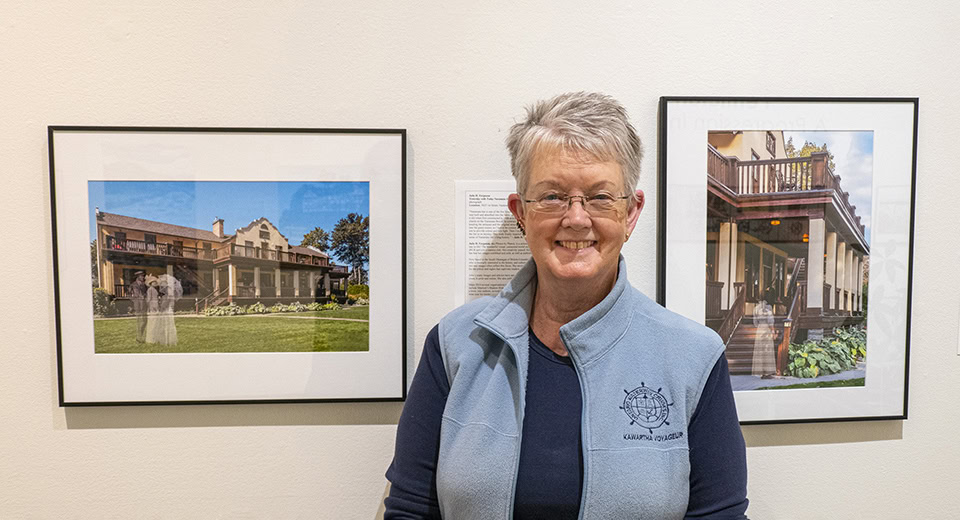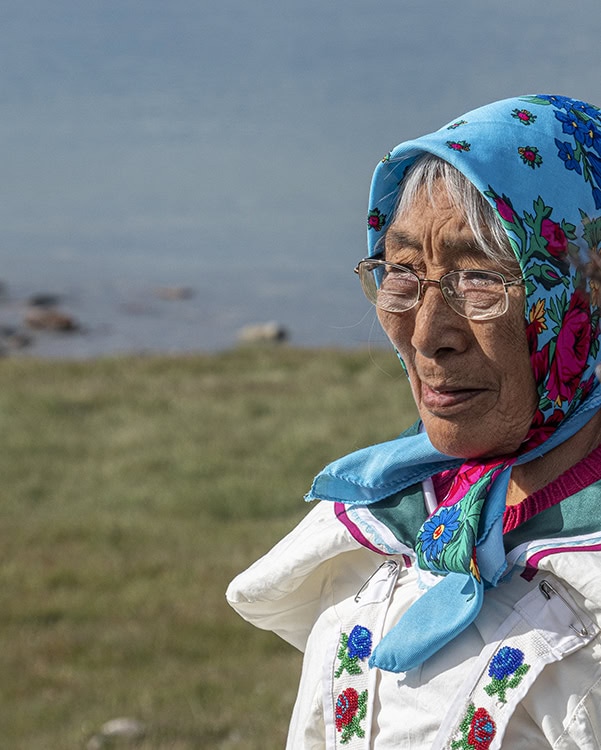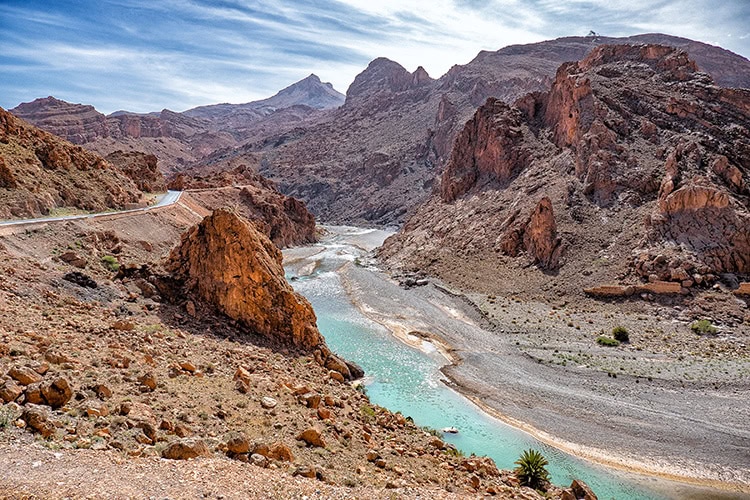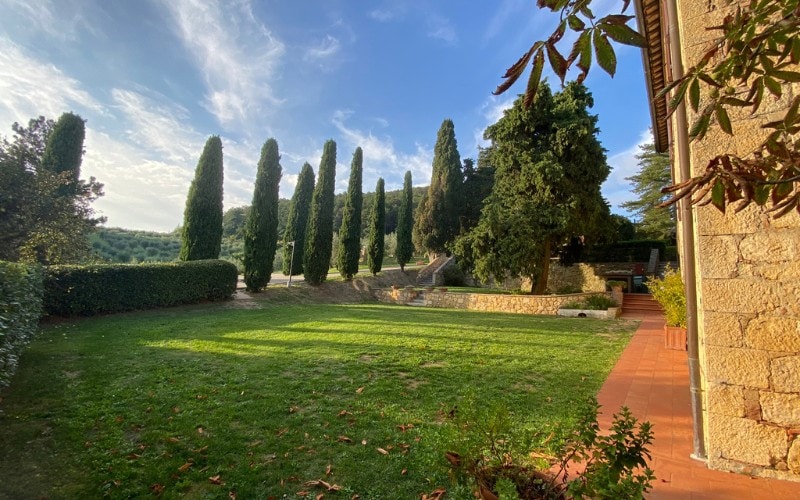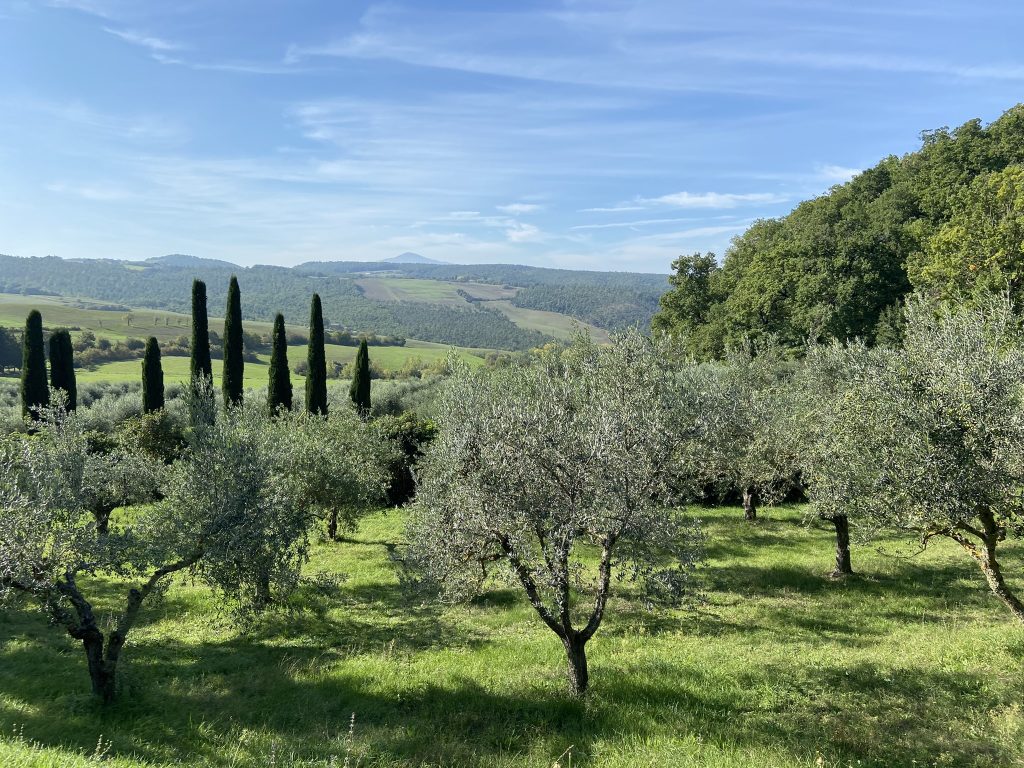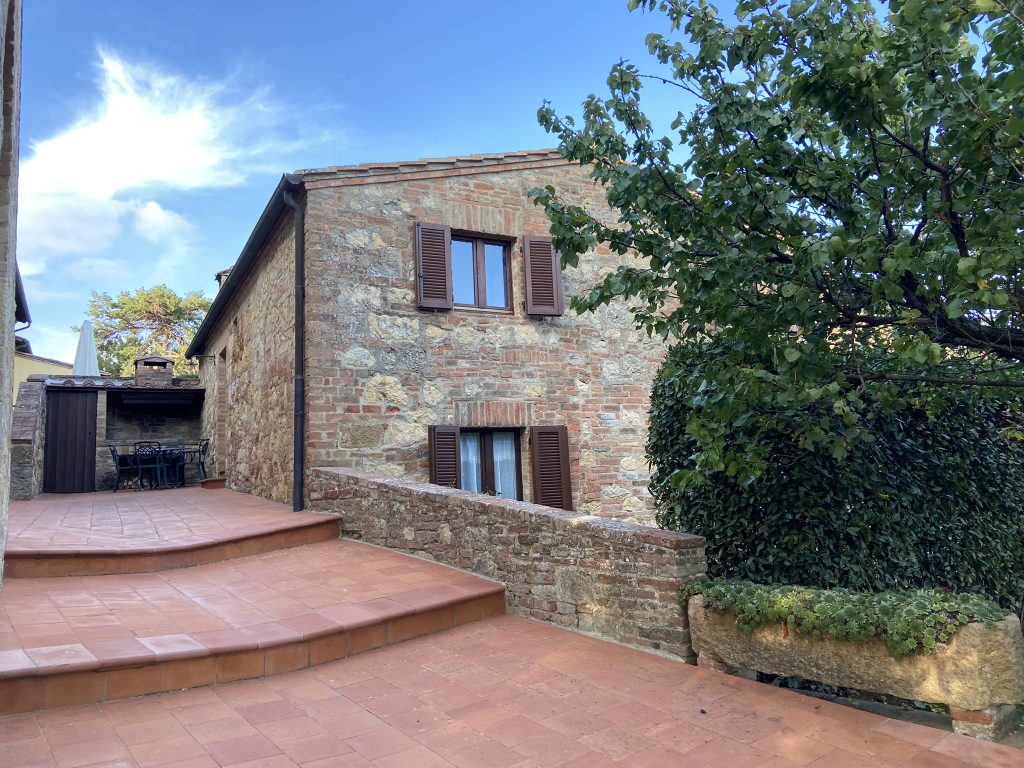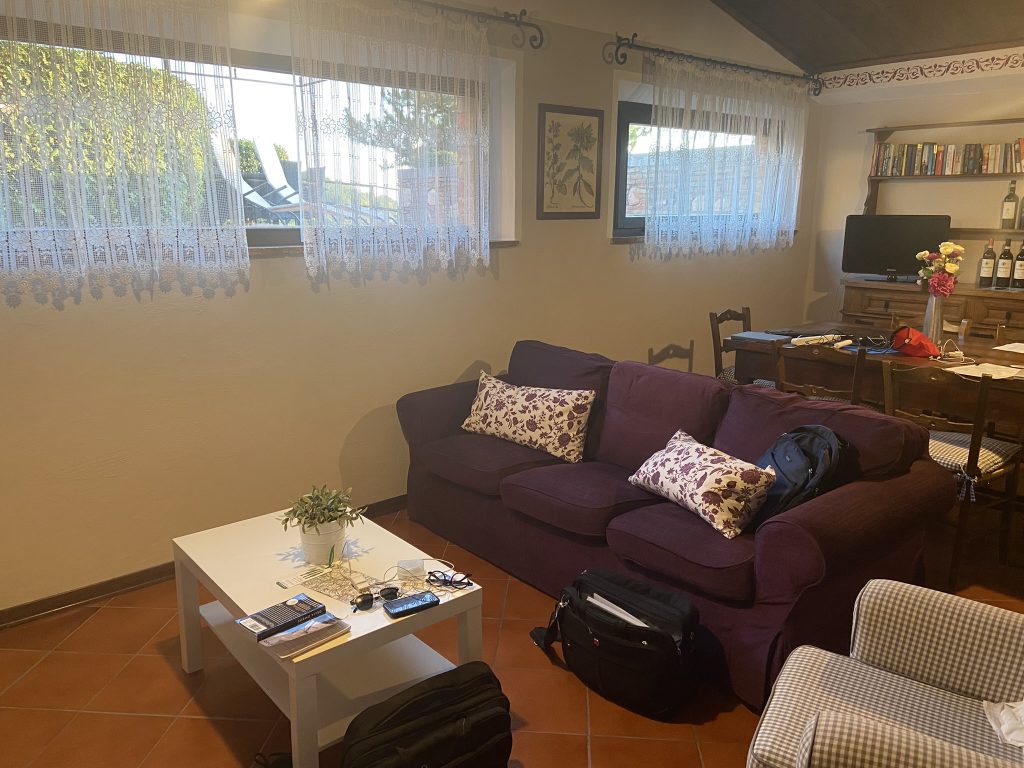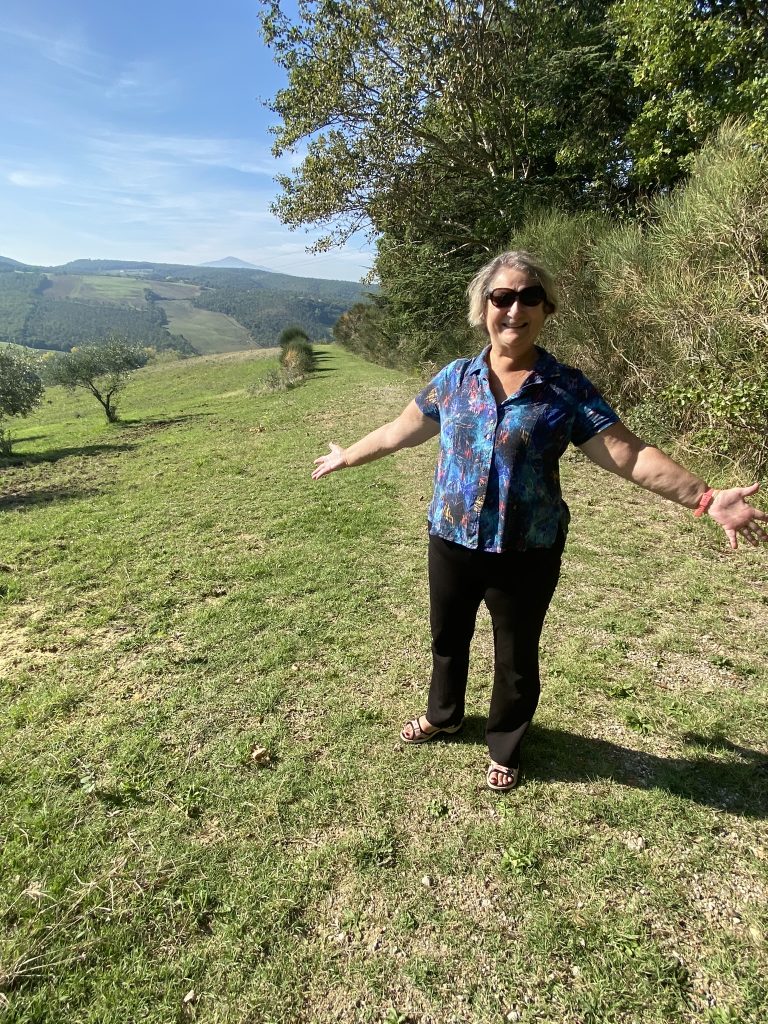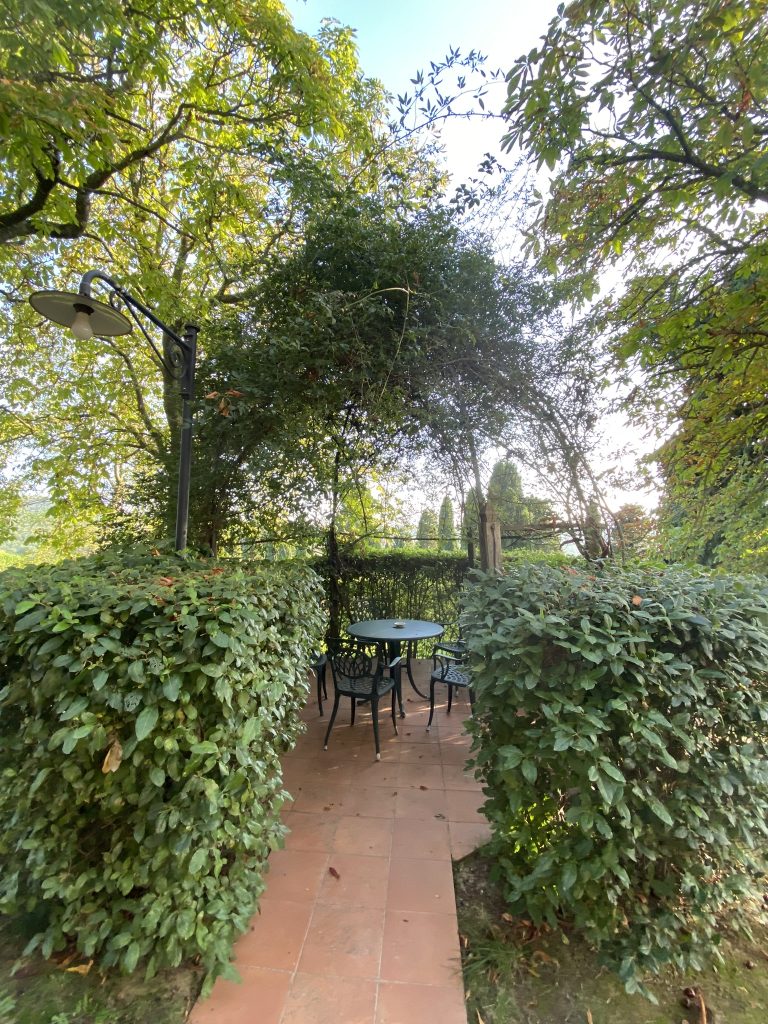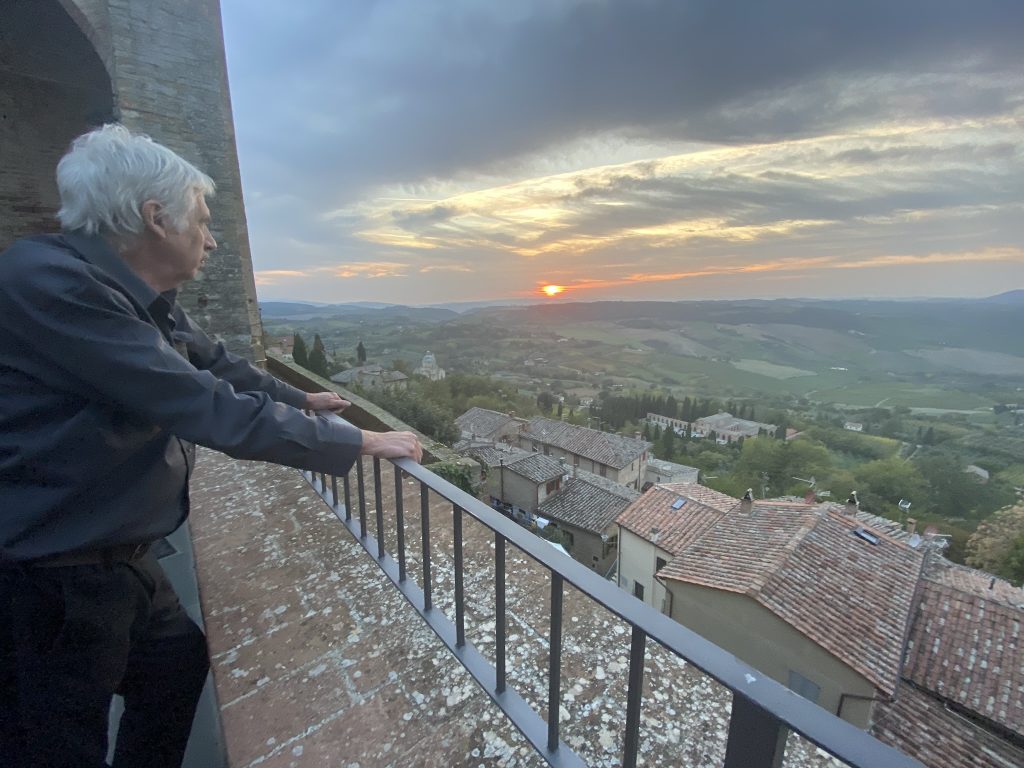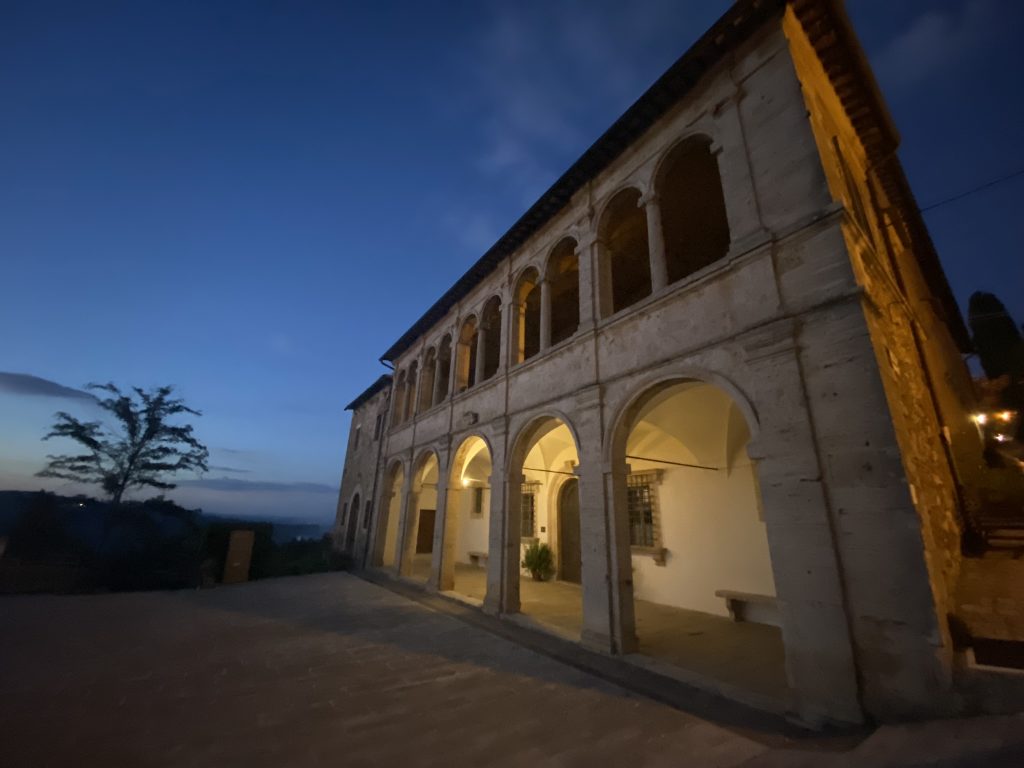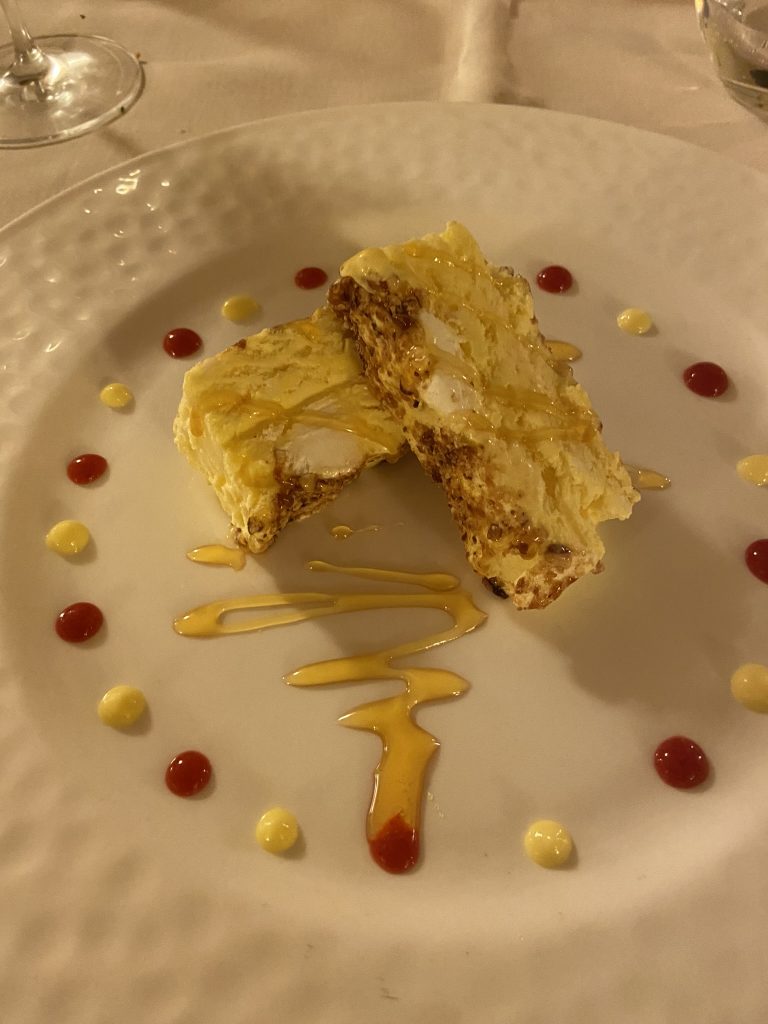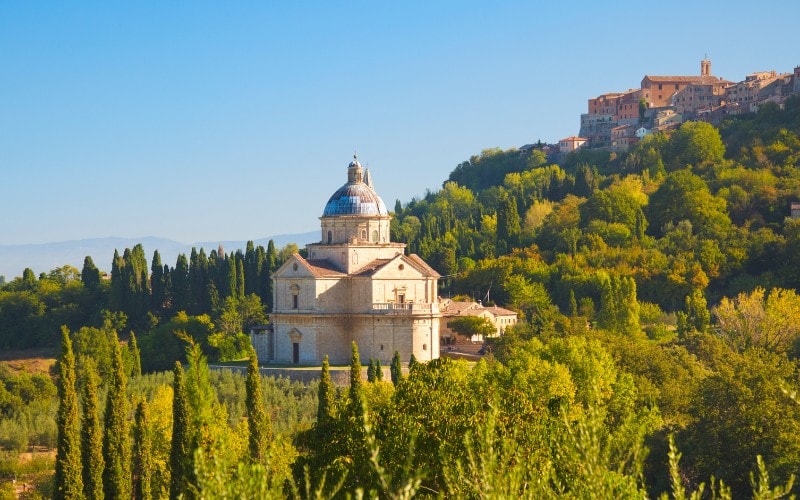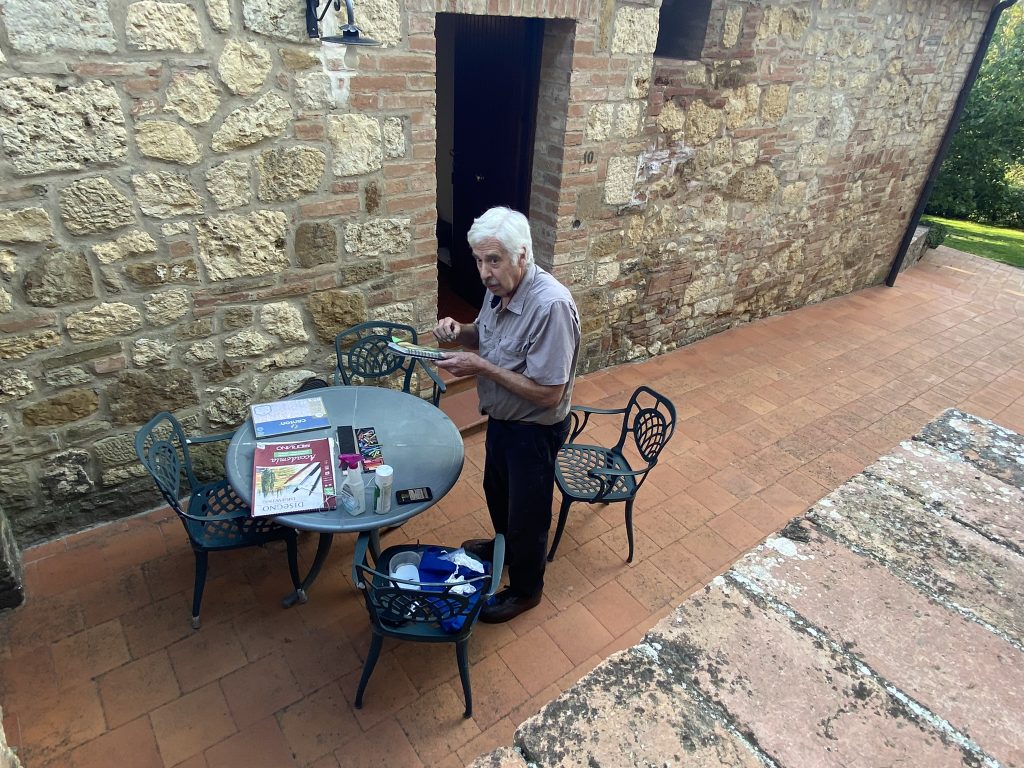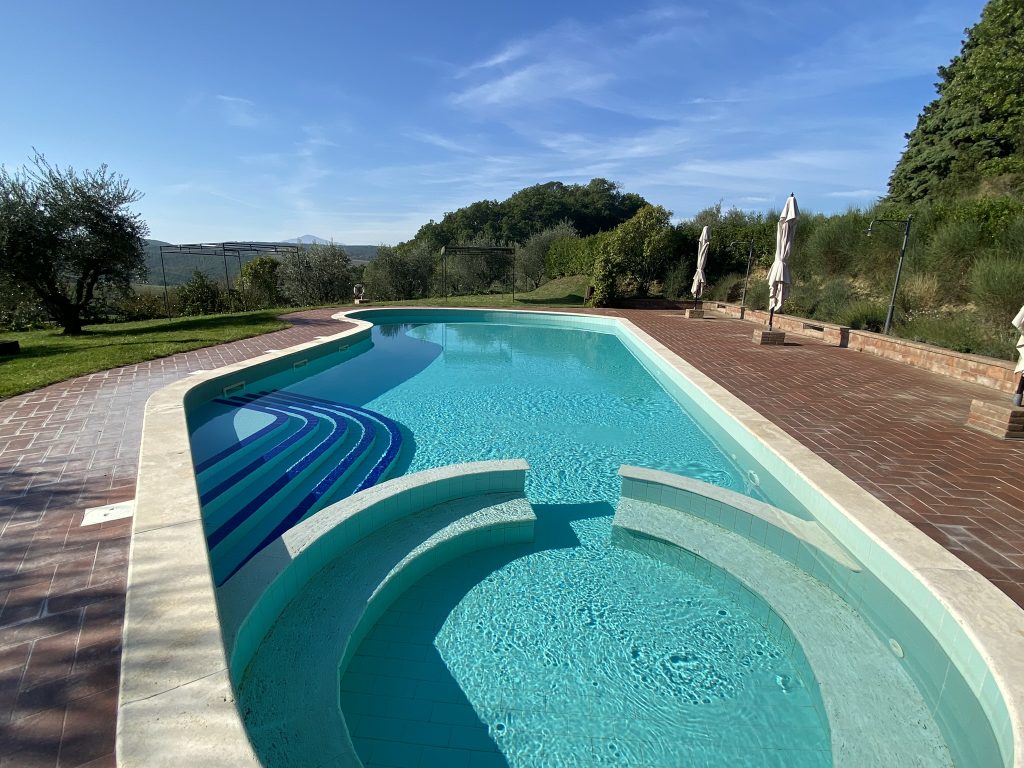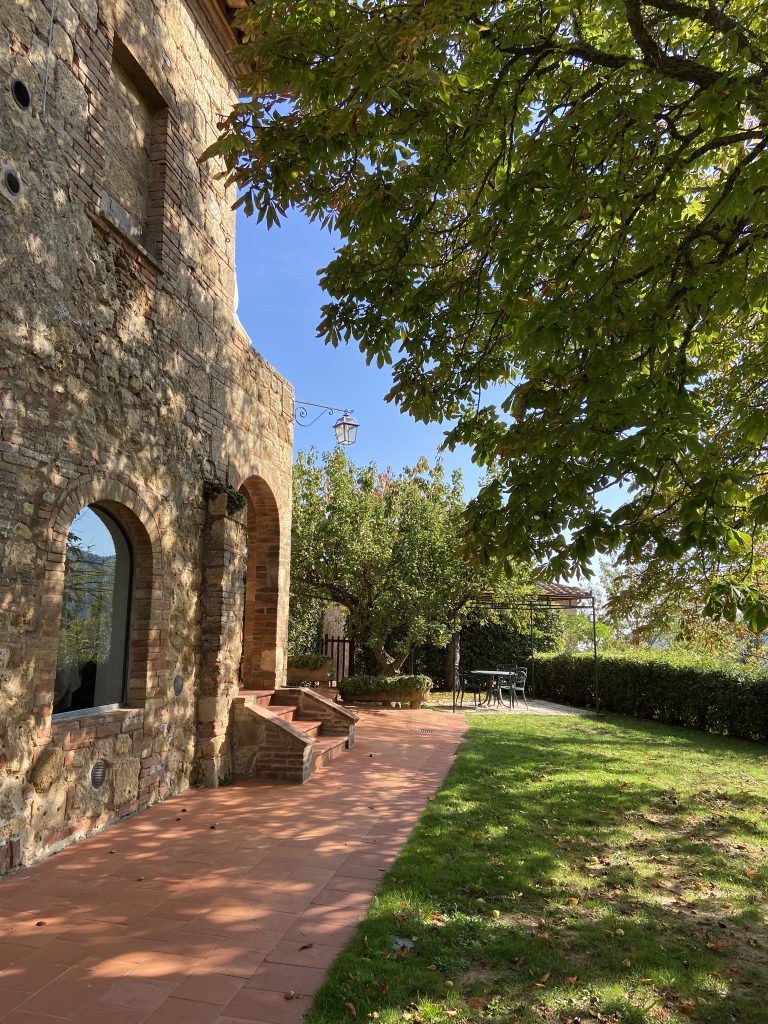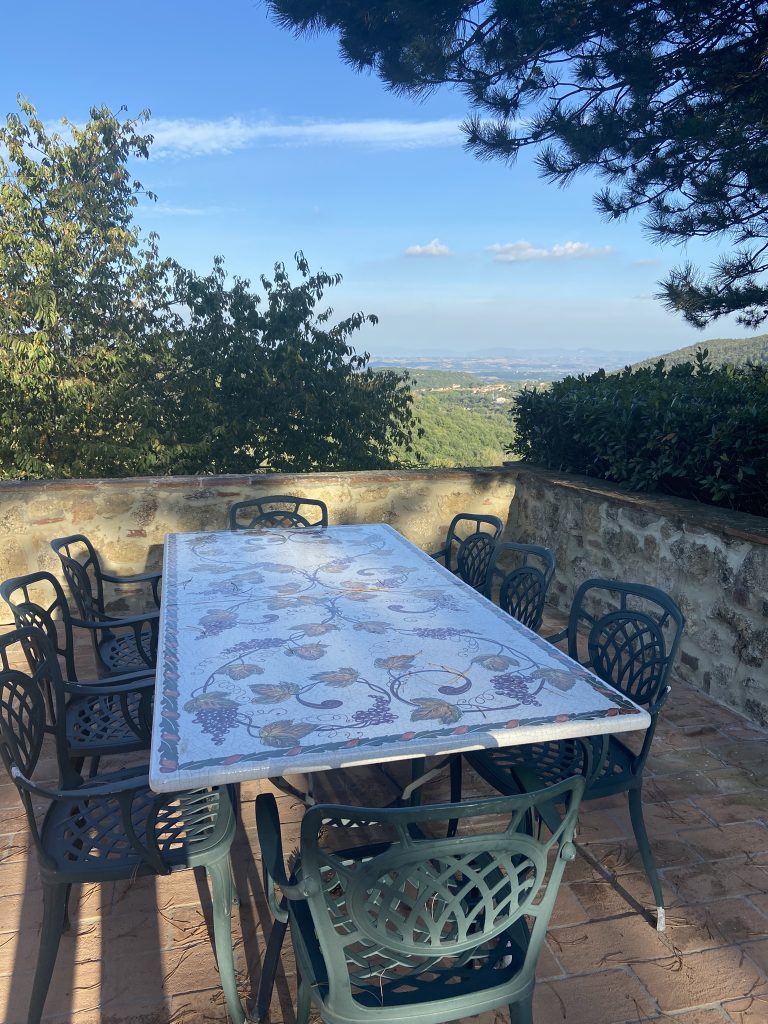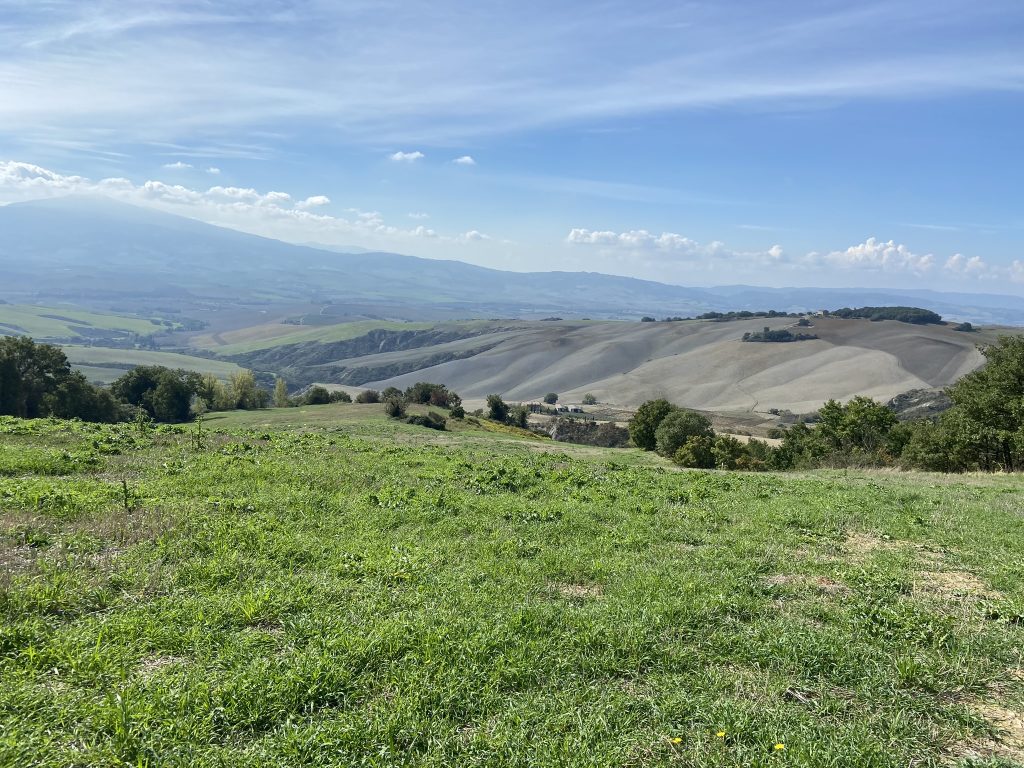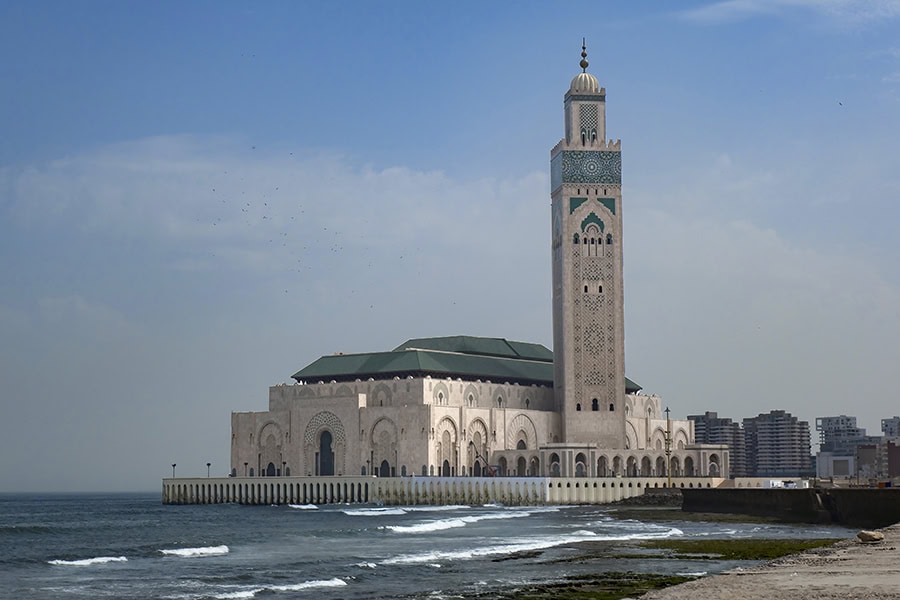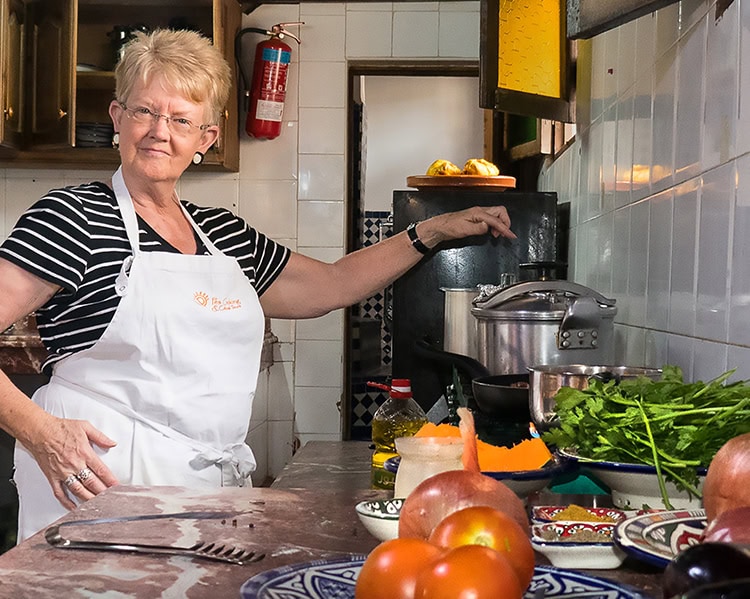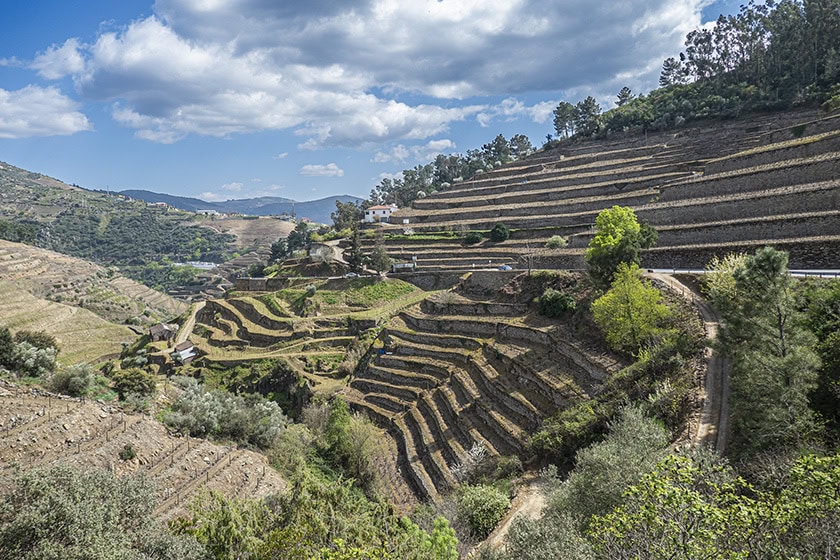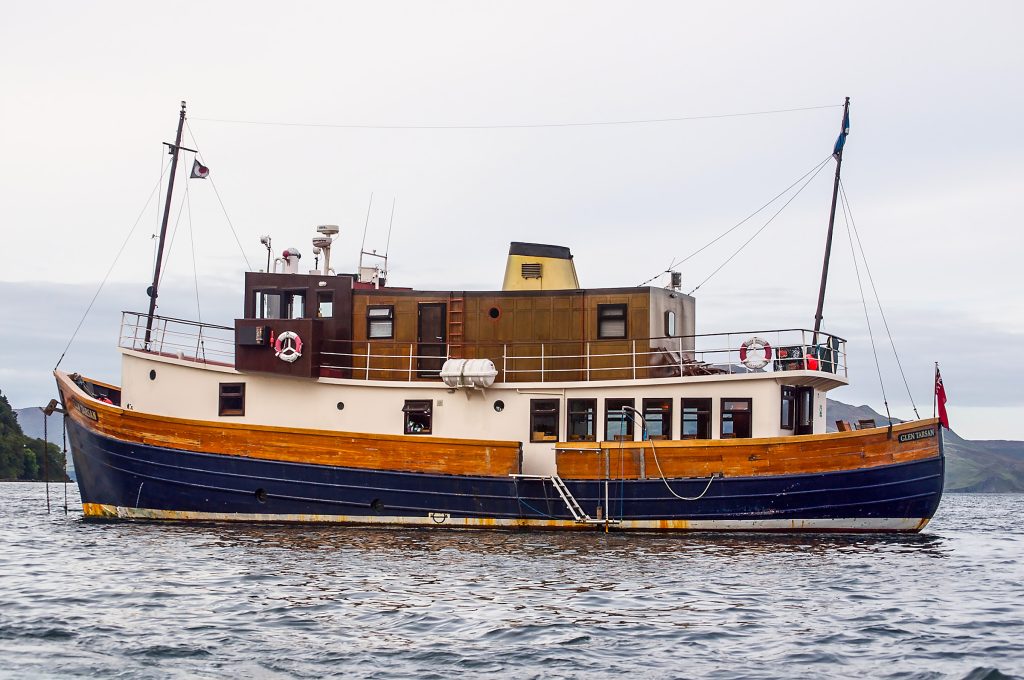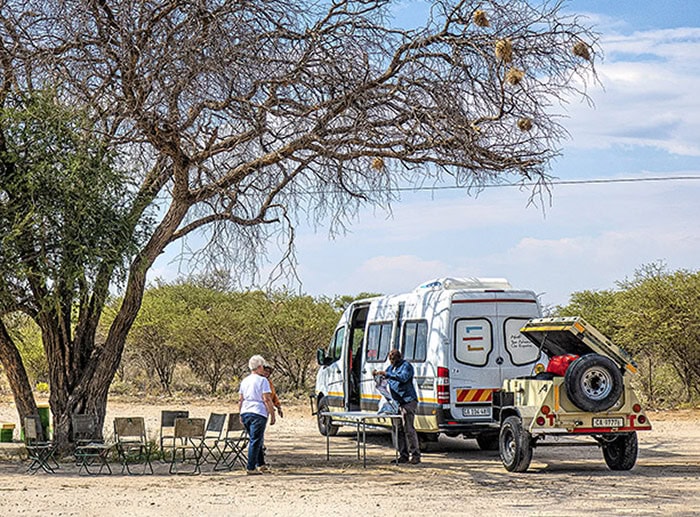Travel Gear: My Best Tips for What to Get
Great travel starts with great travel gear. As a dedicated traveler, I’m always looking for travel products that provide good value, are durable, and make my trip more comfortable.
For me, comfort is key!
In this post, I share my tips on choosing your travel bag, packing up and going, and staying safe and comfortable on the road.

Choosing Your Travel Bag
After years of trial and error, I’ve finally settled on the perfect suitcase. When I was young, I hoisted a backpack, but no more!
Nowadays, I recommend a 28″ midsize hard-shell expandable suitcase with spinner wheels.
Your perfect suitcase should also include a large zippered pocket for dirty laundry and should open flat with straps and/or a middle liner to keep all your stuff from spilling out.
Although I own a jaunty magenta carry-on roller bag, I rarely use it for more than a one- or two-night trip.
Midsize Suitcase Benefits
A midsize suitcase is small enough to hoist on and off trains and busses but large enough to fit packing and compression cubes (more on them later), a pair of sandals and a pair of nice shoes. You can wear your walking shoes on the plane.
In winter, I wear my boots on the plane, ditch the sandals, and pack my walking shoes.
Another good thing about a midsize is that you probably won’t be able to cram so much stuff into it that it becomes too heavy to lift. Do you really fancy wrenching your shoulder every time you need to stash your bag in the trunk of the car or pull it onto a train?
Me neither.
The Joys of Bag Checking
Are you TeamCarry-on or TeamCheck?
Another reason I suggest a midsize bag is because I’m a big fan of checking my bag rather than taking it onto the plane. Why bother trying to cram all your stuff into a carry-on? You may as well enjoy the extra room.
Increasingly, airlines are charging for checked baggage and that extra cost is a consideration. In my opinion, the little bit extra you pay is worth it for the ease and convenience of traveling with a bag that fits your stuff.
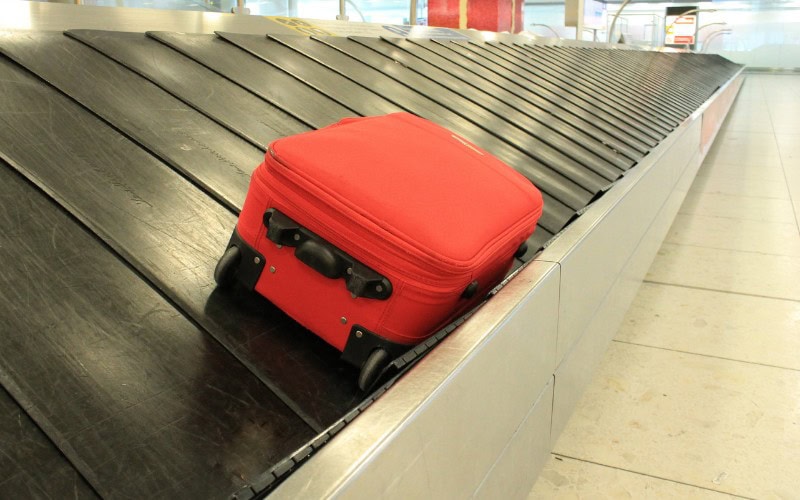
Why You Might Want to Skip Carry-On
First, you can breeze through airport security with just your purse or small bag and maybe a laptop case and then hang out in the departure lounge as unencumbered as possible.
Second, don’t you just loathe the stress of boarding the plane and scrambling for space in the overhead bins? I carry only a small purse (my travel Baggallini!) and a backpack for my laptop. Thus unencumbered, I arrive at my seat, whip out the laptop, throw the almost empty backpack into a corner of the overhead bin and start choosing movies for the flight while everyone else is elbowing each other for bin room.
And finally, nothing beats ending a flight knowing that you won’t have to lift your heavy carry-on down from the overhead bin, wrenching your shoulder (more wrenching) or worse, inadvertently bonking the head of the lady across the aisle.
By checking a midsize bag, yes, you’ll wait a few minutes at baggage claim in the Arrivals hall. But in my world, being comfortable and avoiding pain almost always wins out over saving time (a recurring theme on Artsy Traveler!).
The exception to my no carry-on policy is when I’m traveling for just a few days and have tight connections. I have had my bag get lost in transit and it’s no fun.
My Recommendations for Choosing Travel Bags
So, here are my recommendations for choosing a travel bag based on your travel style.
Carry-on
You have two outfits that you’re happy to wear on alternating days for the duration of your trip, a second pair of shoes, no books or jewelry, a tolerance for doing laundry every few days, and a horror of waiting for your bag in the Arrivals hall.
Midsize
You agree with all the reasons I gave above (and maybe have a few more of your own). Enough said.
Large
You’re going on a cruise, so you won’t be packing and unpacking your bag every night or two. Also, you need extra room for all that cruise formal wear. I’ve been known to over-pack a large suitcase when going on a cruise. I’ve taken several and I do appreciate being able to unpack on day 1 and not pack again until the ship noses into port on the final day.
My husband and frequent travel partner Gregg always chooses Large because he’s catapulted the art of traveling heavy to new heights. Most of his suitcase is filled with a large portable fan, power tools for taking crates apart at art exhibitions , sundry bits of wood for frames, and art materials. A few of the corners are stuffed with clothes.
But Gregg is a special case and we won’t dwell on him.
Some Good-Lookin’ Bags
When buying a bag, I check the brand, the weight, and lastly the color. Buying super cheap is not a great idea when it comes to luggage. I’ve had to get rid of more than a few suitcases over the years because I went for cheap instead of quality.
And buying a good-quality suitcase is more environmentally friendly than buying and then ditching a broken suitcase.
One expensive example of this folly occurred in Amsterdam. The handle of my cheap midsize broke the morning we were leaving to return home to Canada. What a kerfuffle! I had to find a luggage store in Schiphol Airport (fortunately there was one), pay a premium for a new suitcase that I hated, and beg the nice salesperson to dispose of my broken suitcase. I then had to pack the new suitcase on the floor of the store.
Again, thank goodness for packing cubes and a nice luggage store salesperson. She was very understanding, probably because she’d seen it all before.
Packing and Going
What to Take AKA No More Packing Light
Are you a light packer? I get it, but I have to say that I’ve had my fill of packing light. On my first trip to Europe when I was 14, I wore the same hideous mauve Fortrel (and if you don’t remember Fortrel, consider yourself lucky) pantsuit for 30 days. My mom wore the same navy blue skirt and jacket. We dutifully washed out our smalls every few days and that was about it.
On a few subsequent trips, I continued to buy into the one-outfit-with-everything-matching rule and lived to regret it.
You don’t wear the same thing every day at home so why would you do so when you’re traveling? Okay, that’s not exactly true. As I emerge from two years of staying home during the pandemic, I pretty much do wear the same thing every day at home, but that’s beside the point!
When I travel, I like a bit of variety, which is why I almost always opt for a midsize bag!
Variety is the Spice of Travel
I know I’m going against the ‘packing light’ grain, but I suggest you take a variety of clothing that you’ll enjoy wearing over the course of your trip. Not everything has to match! I know, heresy! But seriously?
What I Take Seasonally Adjusted
Now that I’m traveling again, I’m going mostly on long trips that last at least two months. As a result, I need to be able to get everything into my trusty midsize suitcase and still feel like I have enough variety so as not to get bored.
Summer/Fall Traveling
Here’s what I take for trips in the Spring or Fall:
- Three pairs of pants or capris in black or beige depending on the season; avoid white
- Two or three skirts or light dresses (fewer if it’s a fall trip)
- One nice dress or skirt/top combo for going out
- Six tops of varying weights that go with the pants and most of the skirts
- Two sweaters; one could be a fleece
- Bathing suit, underwear, socks, etc.
- A nice jacket (sometimes two)
- Rain jacket
- Hat and scarf for fall travel
- Small stash of costume jewelry (and I purchase more as I travel)
After a day of sightseeing, you deserve to change into something a bit dressier to go out for dinner. Who wants to wear sightseeing gear to enjoy a 4-course splurge dinner?
Cold Weather Traveling
When I traveled to Iceland in February, I added winter boots, lots of hats and scarfs (you can never have too many!), gloves, thick socks, and long underwear. I made room for all this by not taking as many dresses or “nice” clothes since most of the time in Iceland, staying warm was by far a greater priority than looking good.
Warm Weather Traveling
On a recent trip to Kauai, I didn’t bother with a sweater, but I did throw in four bathing suits and a towel. Usually I’d only include one bathing suit and may not even bother taking a towel unless I knew I was doing some beach time. I also took only one pair of pants (which I only wore on the plane) and upped my stash of light summer dresses.
Since I was traveling alone, I wasn’t too fussed about my appearance. Most days I wore my bathing suit under a light summer dress, added a pair of sunglasses and sandals, and that was about it!
Packing Tips
Okay, I’ll admit it. I love packing! Few things are more satisfying than laying all my stuff out on the bed and then systematically rolling and packing each item so everything fits perfectly with space left over for the fruits of foreign shopping.
Four handy items have fostered my love of packing: Packing Cubes, Compression Cubes, Pouches and Purses.
Packing Cubes
Roll pants, jackets and sweaters into the extra-large packing cube, and shirts and tops into the large packing cube. Then use the medium cube for socks and the small cube for underwear.
When you arrive at your destination, simply remove a packing cube, extract the one item you want, and replace the cube in your bag. No more rifling through layers of folded items and ruining your careful packing system the moment you pull an item out.
I can’t begin to guess how much time I’ve saved over the years with packing cubes—time I’ve put to good use snapping photos, having a glass of wine on the terrace, and writing my blog posts.
Compression Cubes
A compression cube or sack is a zippered bag that includes a one-way valve for squeezing air out. Use it to squeeze bulky sweaters and jackets into flat, small, waterproof packages.
Use compression cubes to store soft, bulky items that you’ll be wearing only occasionally. Save your packing cubes for storing your everyday garments. Also note that you can’t store hard objects such as books in compression cubes.
Using a combination of compression cubes and packing cubes is the way to go, especially if you’re a serious over-packer!
Pouches
In these days of portable electronics, you need an easy way to store the various batteries, plugs, earbuds, and cords required to run all your gadgets. I store everything in one pencil-case sized pouch.
Buy ones for especially designed for traveling, or pick them up at an office supply store or dollar store.
In addition to pouches for electronic ephemera, you’ll need a pouch or two for your toiletries.
TIP: Pack small-size toiletries so you can enjoy the fun of shopping for toothpaste and other necessities in foreign countries. Gregg enjoys finding exotic brands of aftershave lotions, especially in Italy and Spain where for some reason the scents are heavenly.
Handbags
Okay, just one handbag unless you also count a backpack or satchel. I carry my laptop in a backpack and Gregg carries his in a satchel. For everyday walking around and sightseeing, I carry a small travel handbag that includes a zippered compartment for my passport and space for my phone and a small wallet for cash, an ATM card, and two credit cards.
TIP: Make photocopies of your passport, credit and ATM cards, and any other important documents before you leave. Take one copy with you and leave another with someone at home.
My favored handbug for travel (a Baggallini) is much smaller than the bag I carry at home. It’s very light, washable, and worn bandolier style over my shoulder and across my body to thwart thieves. Gregg carries his daily walking-around stuff in the front pouch of his small camera bag.
A fanny pack (also known as a hip pack) is also a possibility although I have to say they are not the most flattering travel accessory! Still, they’re very convenient and are easy on the shoulders.
Keep it very simple and uncluttered.
Staying Safe and Comfortable on the Road
Food Bag
Pack a soft-sided, collapsible insulated bag. It’s invaluable for keeping food coolish during transit. We fill ours with individual yogurts, cheeses, vegetables, and fruits, and buy fresh buns at local bakeries to make picnics.
For more on eating on a budget in Europe (and the food bag plays a part!), see Dine Well on a Budget.
Power Adapters
When traveling in Europe, you need to have a good supply of adapter plugs—the two-prong 220 adapter for Europe and the three-prong adapter for the United Kingdom.
You must purchase these before you leave home. Finding them in Europe, even at large electronics stores, is a major headache and often impossible. Even at the massive FNAC in Paris (a major electronics chain), we couldn’t find 220 adapters.
Buy at least four more adapters than you think you‘ll need and store them in your electronics pouch or in a separate pouch.
On just about every trip, we lose a few of the plugs. I don’t know where they go. They’re kind of like socks in the dryer. If you have three devices that need plugging in at night, take eight adapters. Trust me on this.
Laptops and Tablets
A laptop or a tablet is a nice-to-have accessory when traveling in Europe. Most hotels have WIFI so you can connect your device to watch movies and other entertainment in the evenings. To be honest, English TV in most European hotels is either non-existent or limited to two or three news channels.
E-Readers
I always bring along my e-reader so I can download and read novels and guidebooks on the go. In addition, I often pick up paperbacks while traveling. Many hotels have a shelf of books left by travelers for you to take and read and then leave at another hotel.
Smartphones
These days a smartphone is a necessity. I remember with a mix of fondness and horror trekking to a train station to examine the paper schedules, trudging dark, rain-slicked streets to find a bed-and-breakfast, and running out of money only to find that all the banks within 50 miles were closed for days and that none of the local merchants accepted traveler’s cheques.
Ah, those were the days! Not.
Use your smartphone to look up train schedules and then buy the tickets online, book your accommodations while you’re on the train, check restaurant ratings (I do that a lot) when you get to your destination, and even find your way through the back alleys of Venice. Some of the serendipity of travel has disappeared with the arrival of smartphones, but we’re able to spend our travel time more wisely now as a result.
The ratio of sightseeing to survival is more like 80/20 these days whereas back in the day, the ratio was closer to 20/80. We often spent more time getting from A to B, looking for accommodation and then finding somewhere to eat when fast food and cheap restaurants were a novelty than we did enjoying the places we’d traveled so far to see.
These days, travel is just too darned expensive to waste time on taking care of food and shelter needs!
Security
Money Belts
Packing and compression cubes, pouches, and purses definitely help you stay organized while traveling. For peace of mind, also wear a money belt. I favor the style worn around my waist and under my clothes. Gregg likes the neck-pouch style for storing his passport when in transit.
At hotels, we use the safes provided to store valuables such as passports and any extra cash. These days, most safes lock and unlock with a four-digit combination that you choose. Use an easy one such as an important year in your life (not your birth year!) but not one as simple as 1-2-3-4.
Back in the day, hotel safes were accessed with keys. I still shudder when I remember losing the safe key while staying at a hotel in London. We were charged a very hefty fee to get access to our valuables because as we discovered the hard way, the hotel did not keep duplicate keys.
Locks
Purchase a small travel lock for securing your luggage while on trains and in public areas. Some travel bags feature built-in combination locks.
RFID Blocking
A good idea while on the road in Europe is to encase your smartphone in an anti-radiation pouch, also known as an RFID blocking sleeve. This handy accessory prevents identity theft and also blocks up to 100% of harmful Electromagnetic Radiation (EMF) from getting to and damaging your mobile devices.
Conclusion
Do you have tips on what to pack for Europe that you’d like to share with other Artsy Travelers? Please comment below!
Here are some more posts containing tips for smart travel:
